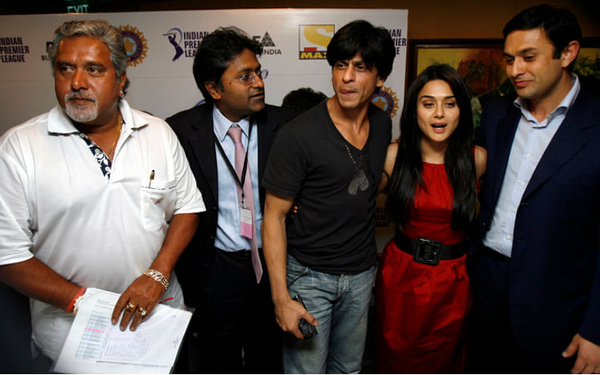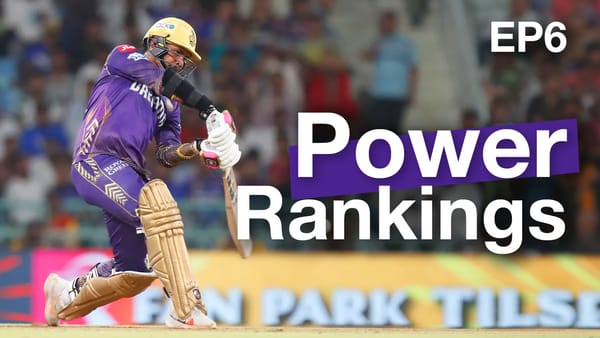Who is cricket's best Test opener?
We have entered a truly bizarre part of Test cricket where the opening batters are one of the weirdest things in the sport.

Yashasvi Jaiswal is the joint second quickest to 1000 Test runs by number of matches after Bradman. Yes, another ‘not since Don’ stat for the world’s most determined ten-year-old.
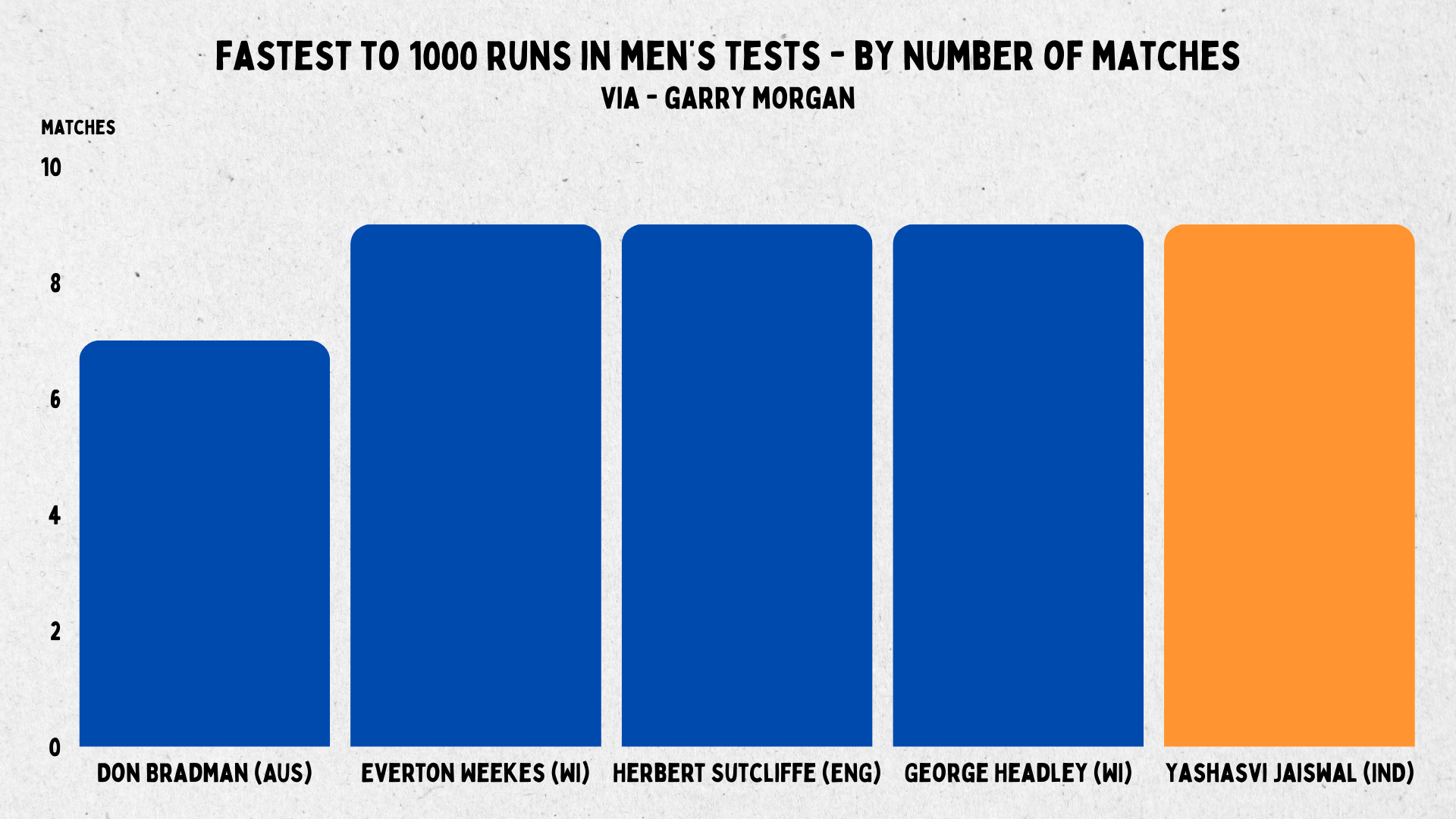
Yet, we have Ben Duckett claiming that Bazball inspired him. The same Ben Duckett who was picked as a spin specialist in 2016, and could not buy a run.
When Rohit got the chance to open the innings in 2019 he said he felt it was his last shot at this format. He went on to become the Test captain at 34, and has now led India to a series triumph against the Bazballers.
Zak Crawley and Usman Khawaja were the top run-getters for their Test side in the last Ashes, and their strike rates were on the opposite ends of the spectrum.

Speaking of scoring speeds, Kraigg Brathwaite is slow. His strike rate is 4 points less than Cheteshwar Pujara’s, which is like being slower than a sloth.
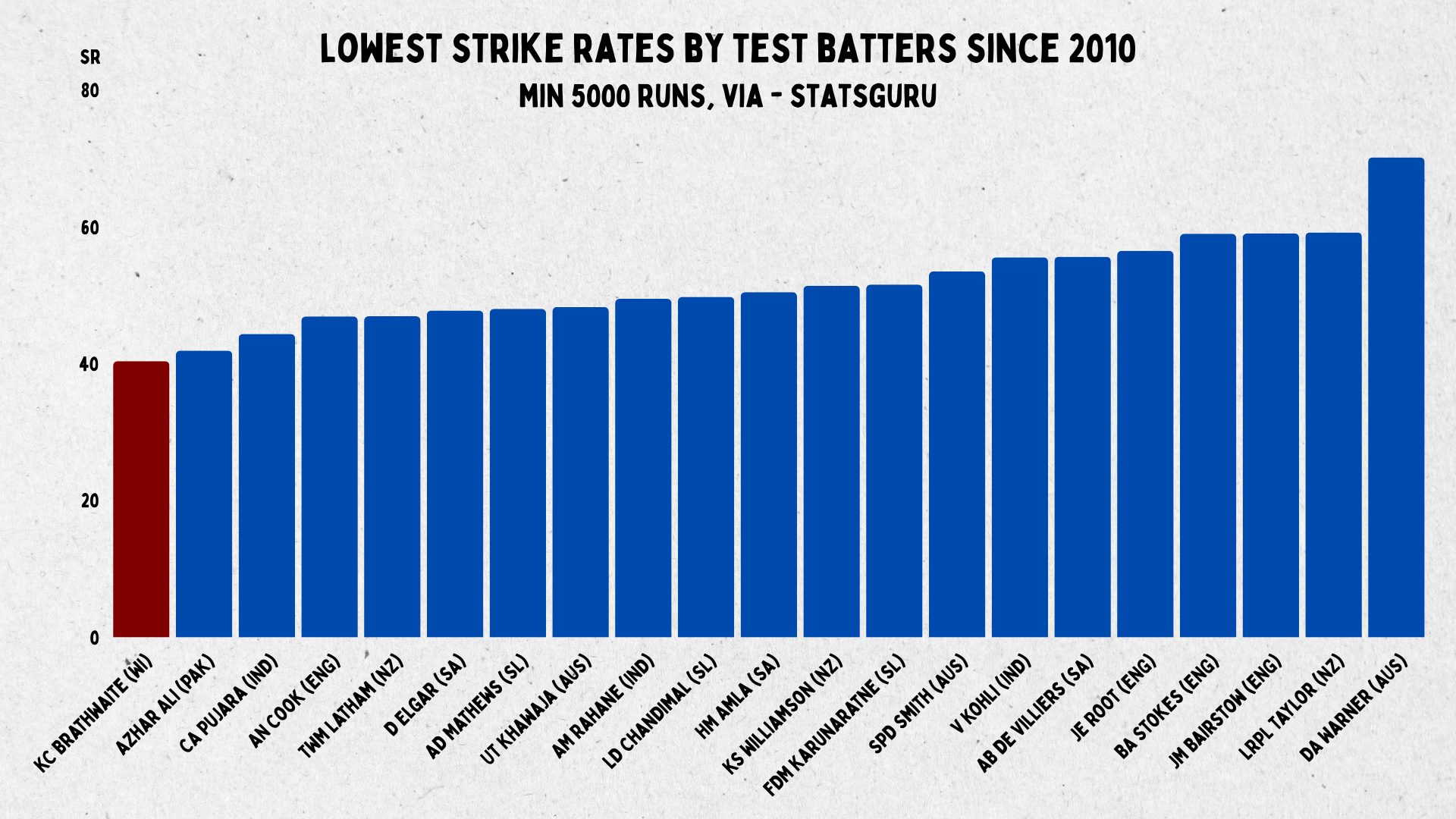
Dimuth Karunaratne has specific goals in sight. He wants to be better than Usman Khawaja, reach 100 Tests, and then get to 10K runs.
Devon Conway sprinkled kitty litter on practice wickets so he could counter spin when the ball spits out of the rough. New Zealand openers - even the ones born in South Africa - have always been weird.
We also have the greatest batter of this era, Steve Smith, volunteering to open. He talked up his average of 60 after 4 innings with two not outs, and followed it up with 51 runs in 4 innings in New Zealand. The greatest batters of all time don't decide late-career to open the batting.
Something is very odd about Test opening right now. Dean Elgar is gone, Alastair Cook as well. There are no Chris Rogers either. We have entered a truly bizarre part of Test cricket where the opening batters are one of the weirdest things in the sport. This makes trying to work out who is best even harder than usual.
These fascinating quirks tell us about the variety of openers we have in the modern game. And let’s face it, opening in this era has not really been a piece of cake. Scoring Test runs has been difficult, especially if you’re facing the brand new ball at the start of the innings. But things are getting a little better in the last couple of years, though 2024 has started a bit low.
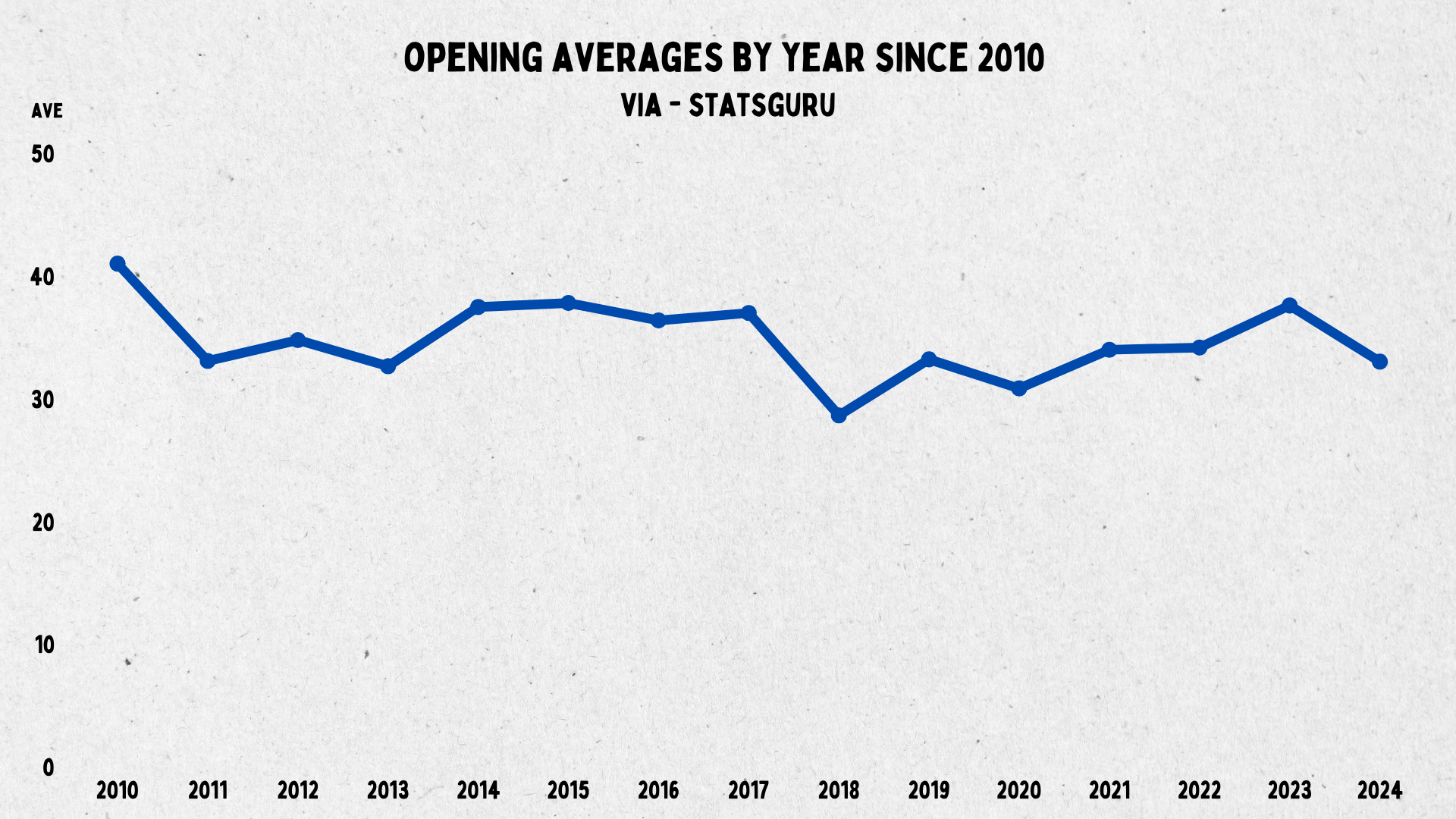
Out of the 28 batters with at least 500 runs in the last five years, only nine average more than 40.
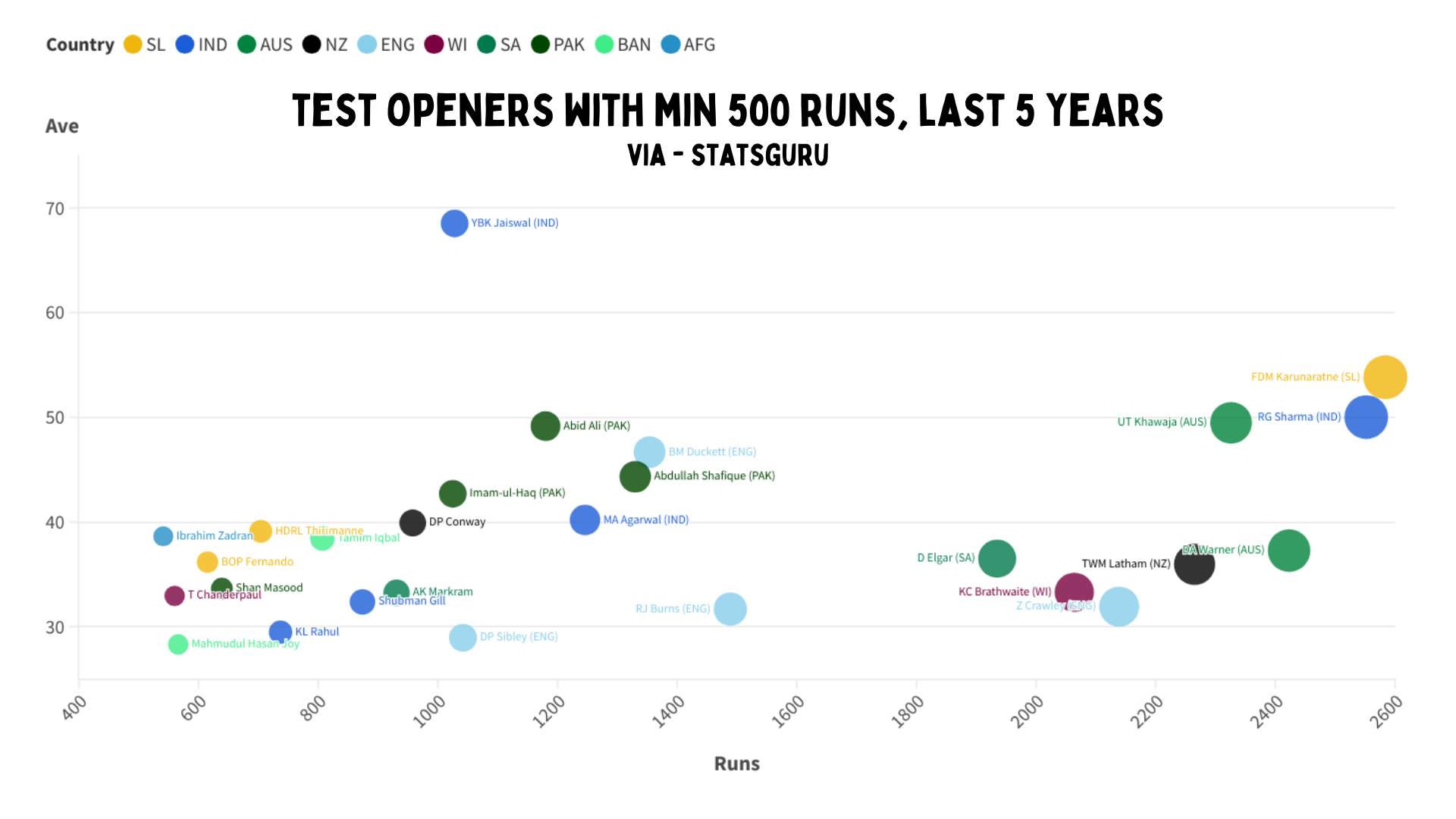
Three of those are from Pakistan, where flat wickets roam free. None of them average more than 30 outside Asia if we exclude Zimbabwe. Mayank Agarwal is in a similar situation here, he averages 69 at home but only 19 outside Asia.
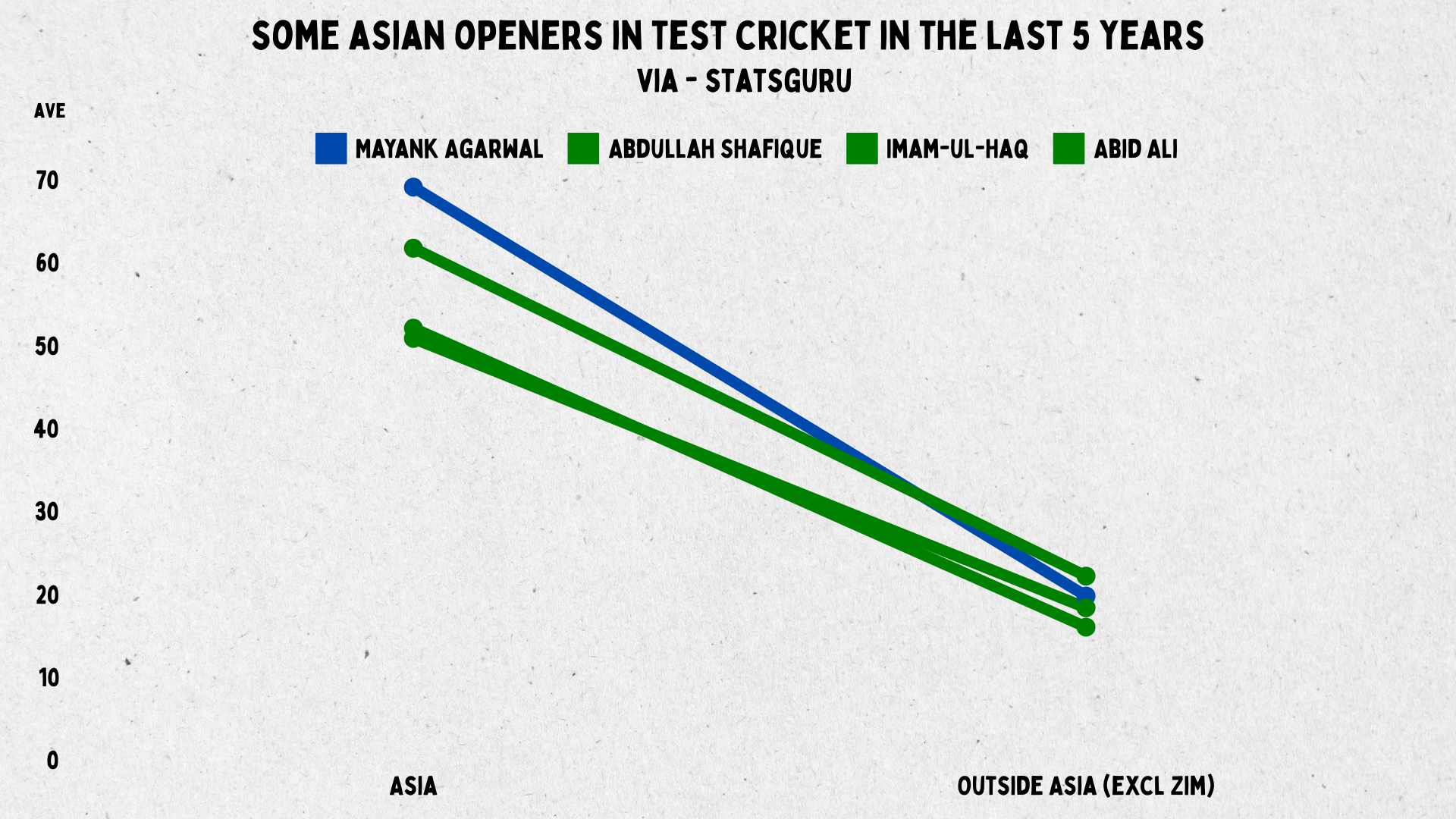
Yashasvi Jaiswal has had a dream start to his Test career, but even he struggled in a low-scoring series in South Africa. So while we can not-since-Don him all we want, he needs more time and experience.
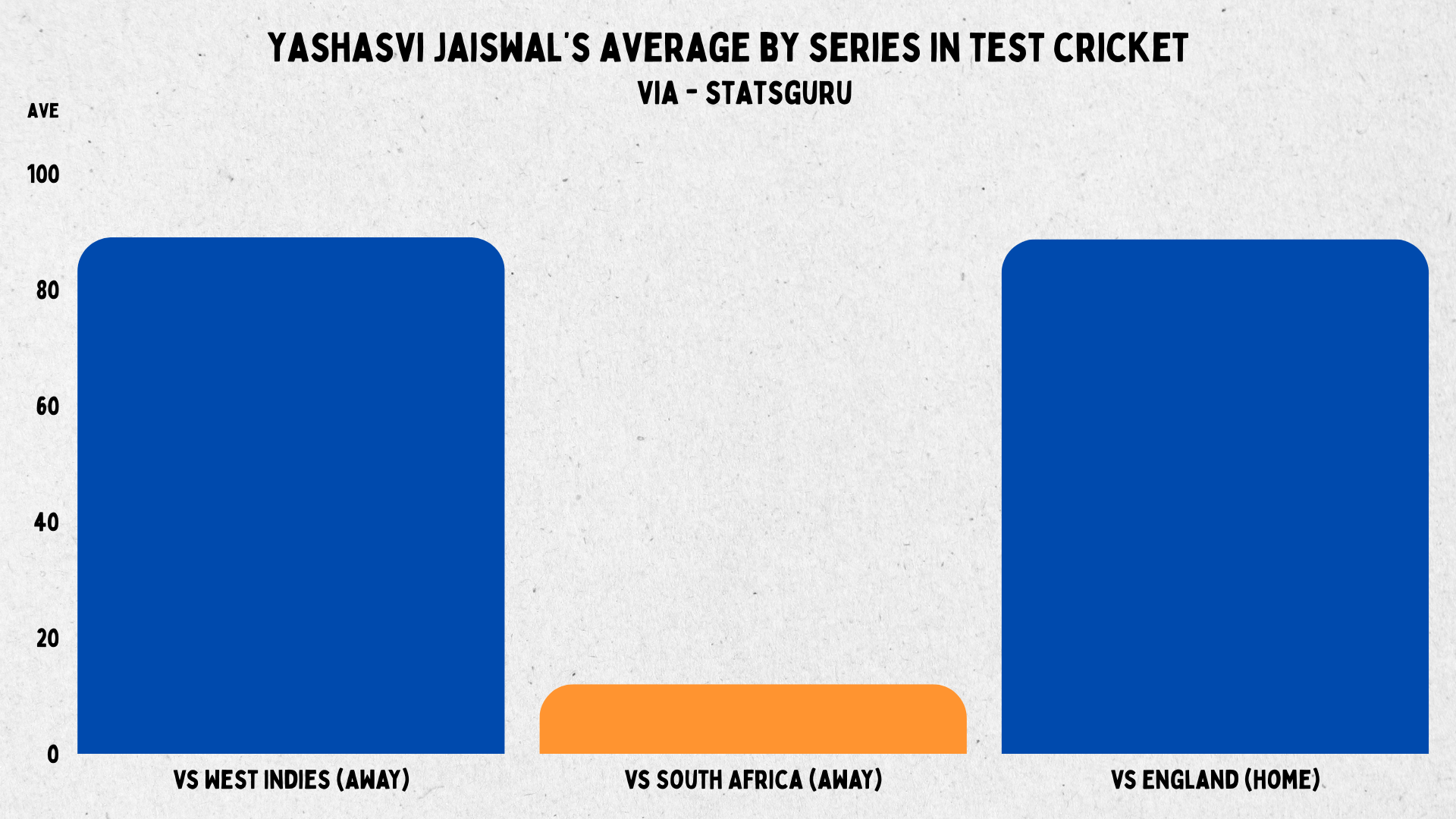
Duckett is the fastest scorer in the world after Harry Brook since his return to Tests, but he’s also played only four full series and a one-off Test against Ireland since his comeback. It seems to be working when he’s not facing R Ashwin early on, but teams know more about him than before.
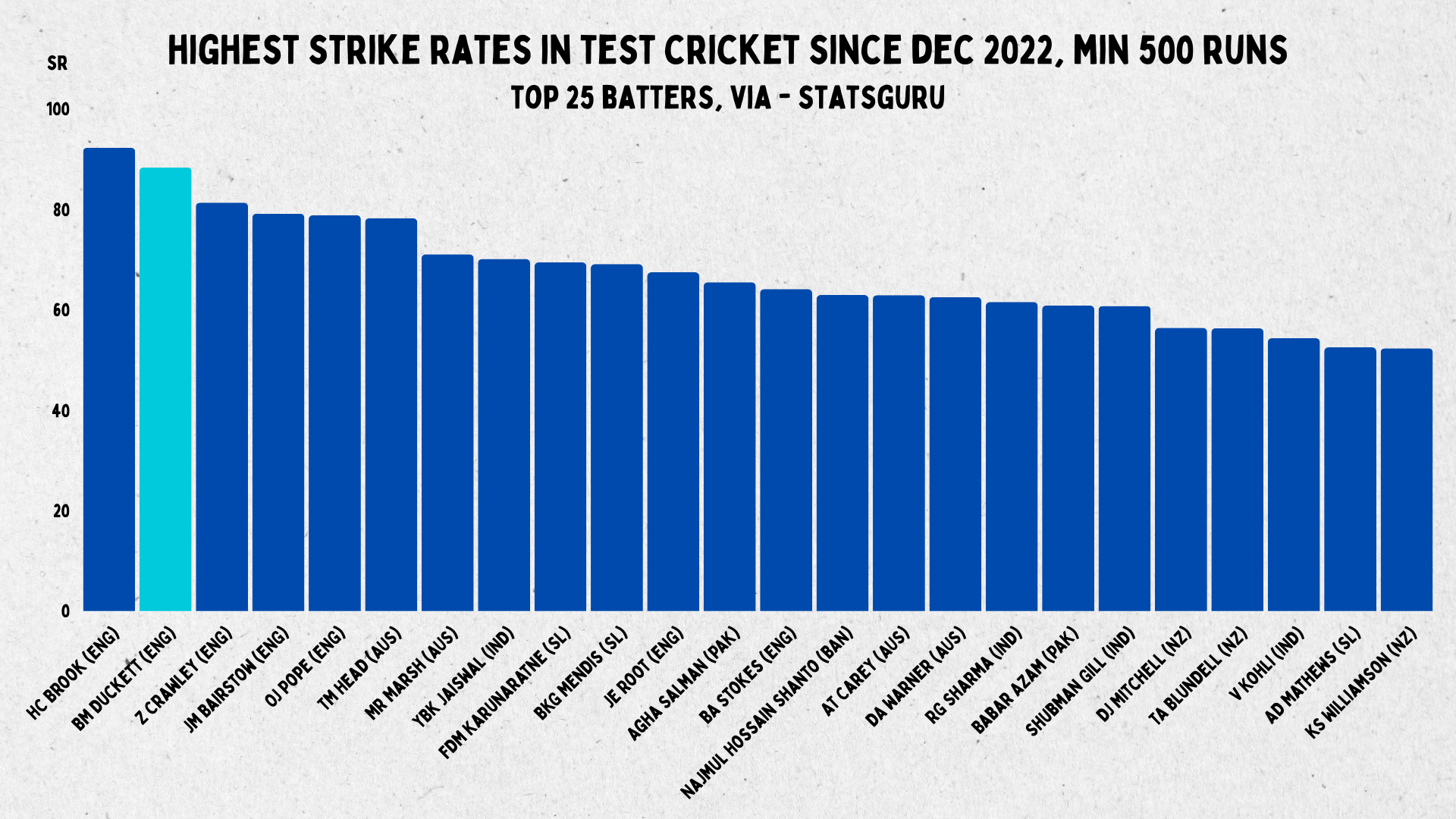
Zak Crawley has the counting stats, but he still averages less than 35 overall. However, that has gone up in the last two series - against the top two bowling attacks in the world. There still aren’t enough big scores in a row, but he is the king of the high-impact start (which is what England asked for).
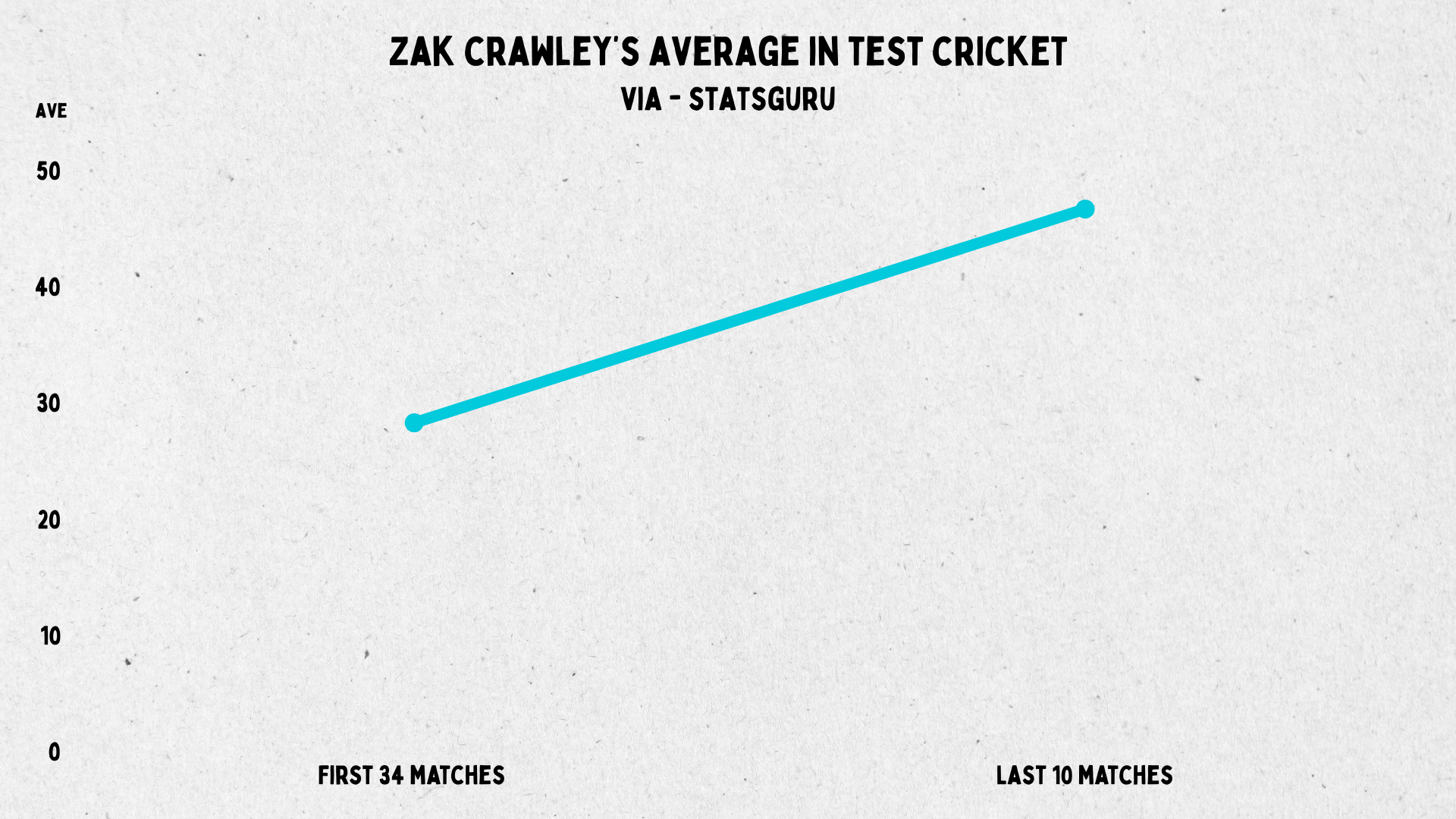
But you’d still expect these guys to do it longer to enter the conversation of who is the best.
For instance, Conway also had a superb start, averaging 68 in his first five Tests as an opener. That mark has now fallen off a cliff in the next eight matches - he averages slightly below 40 now. Teams have worked out that he plays outside the line, so now he must adapt.
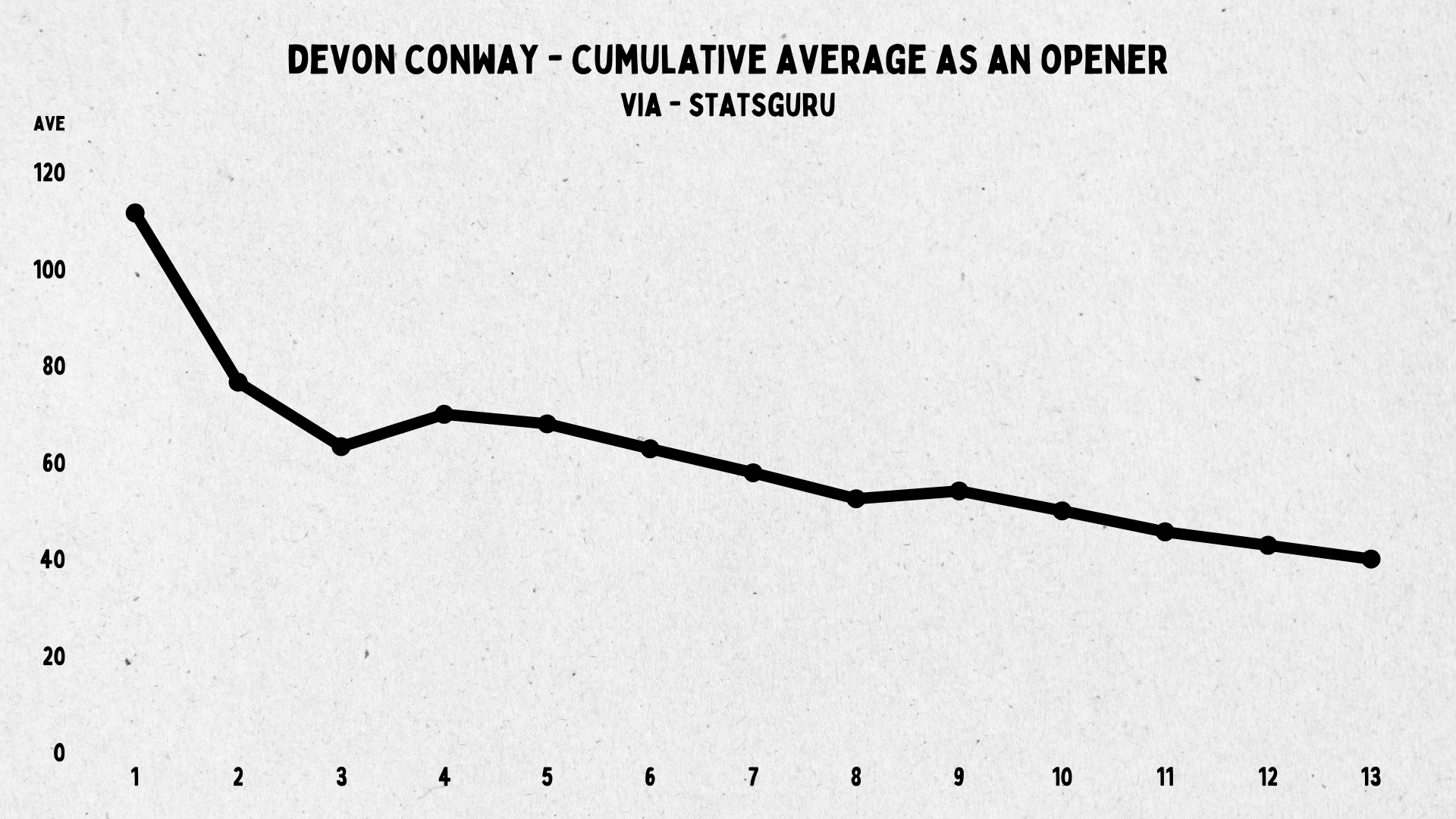
Tom Latham is still around, but his numbers just hold up in Asia (except Bangladesh) now. He is not dominating at home either. No one doubts he can play, but the more you look at his record the more he slides down.
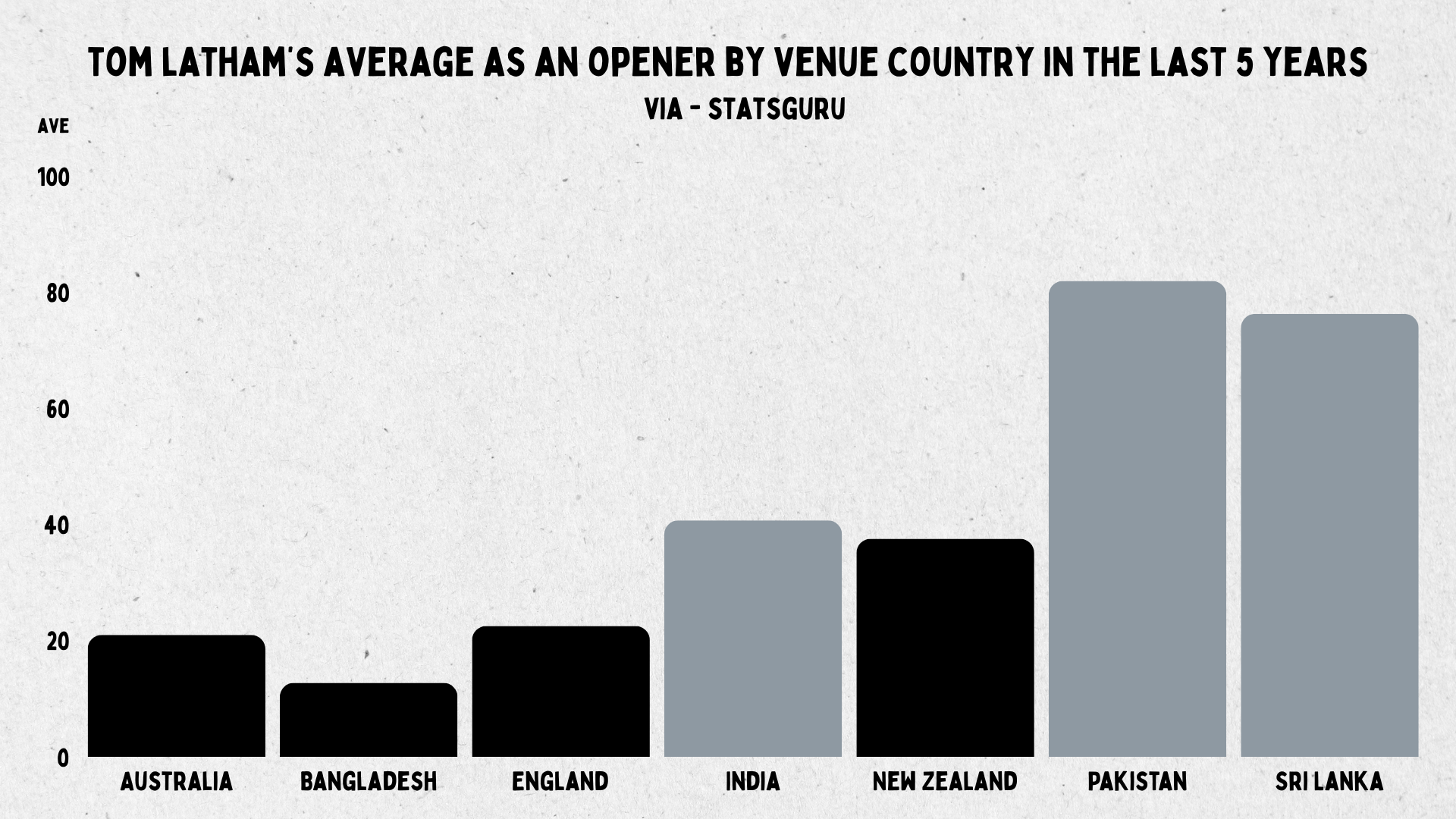
David Warner and Dean Elgar are two big names who retired earlier this year. They are among the top run-getters but their dips in form meant they’re still averaging in the high 30s. Both cashed in at home, but really struggled on the road.
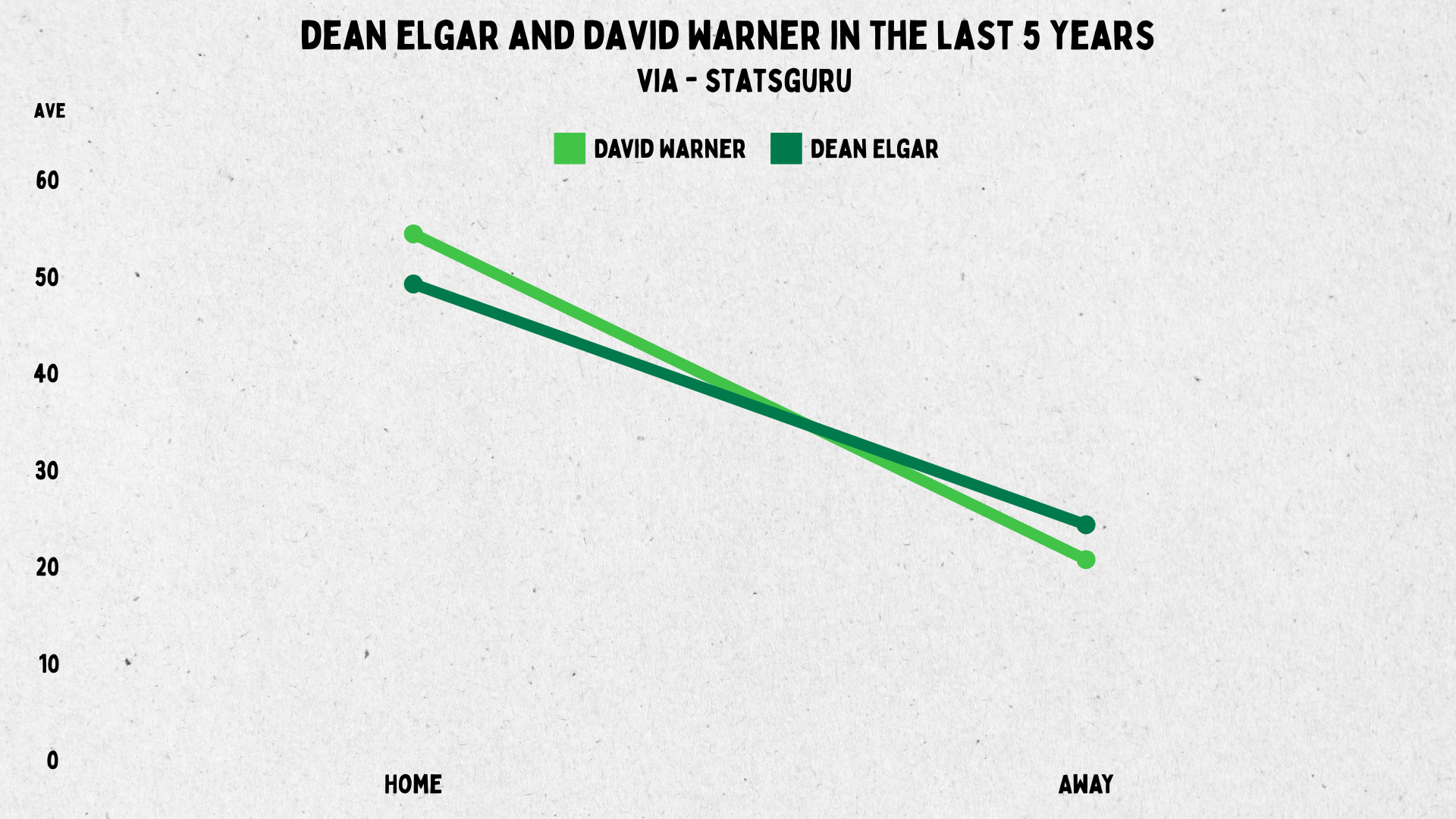
So if you are looking for a short list, the three names have to be Rohit Sharma, Dimuth Karunaratne and Usman Khawaja. In terms of runs and average, they really are apart from everyone else.
The primary role of a Test opener is to see off the new ball. Karunaratne and Khawaja are a cut above the rest here, with a balls per dismissal rate of over 100 in the first 20 overs. Rohit is not too far behind, especially when you consider he can also attack early on if needed (like he did in this series). Duckett gets out the most often among all openers.
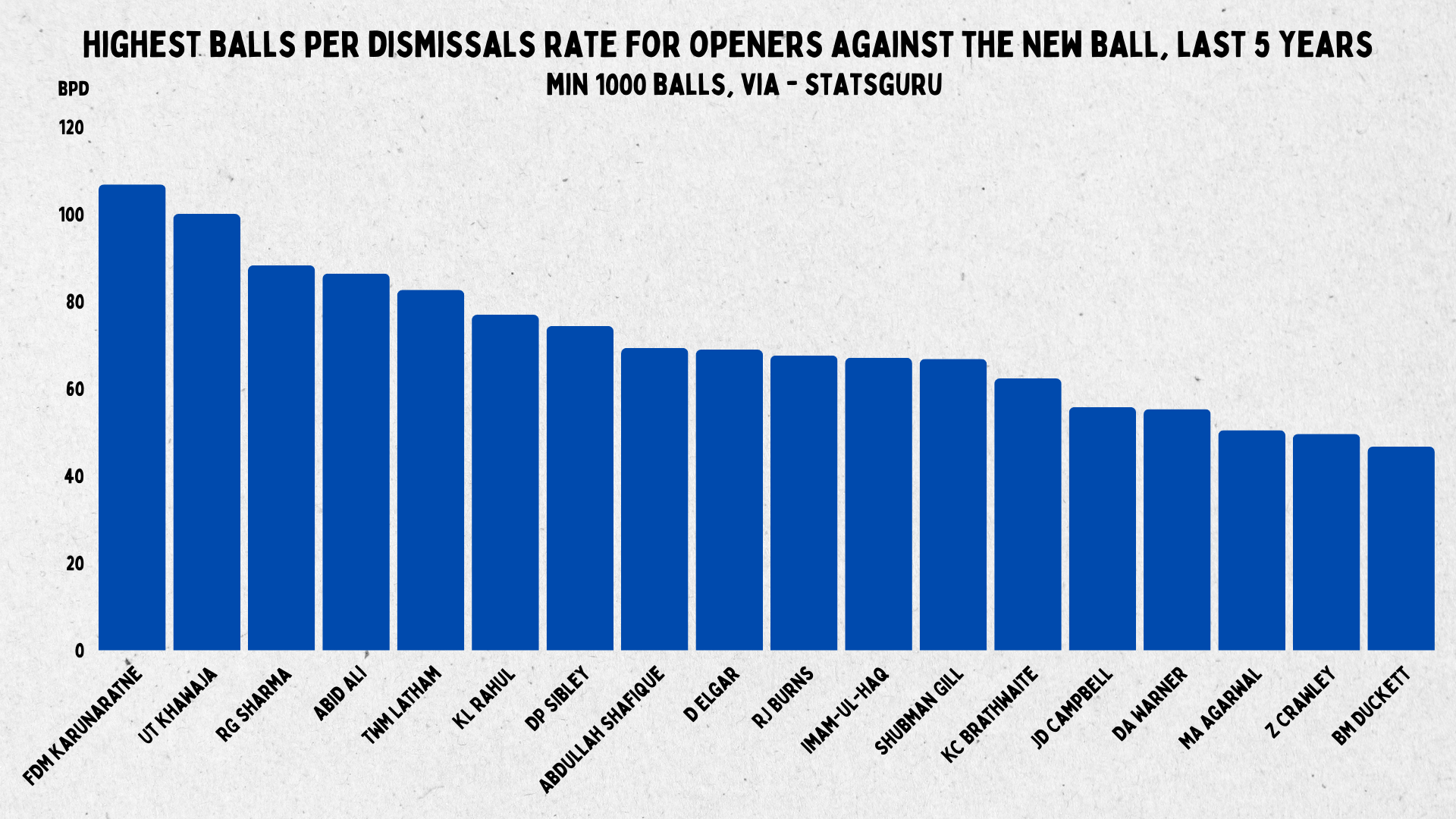
But the game is also about scoring runs. Duckett comes back up to number four on average. The top three remain the same once again, except for the fact that Rohit has a better average than Khawaja despite a lower BpD - implying that he is a quicker starter.
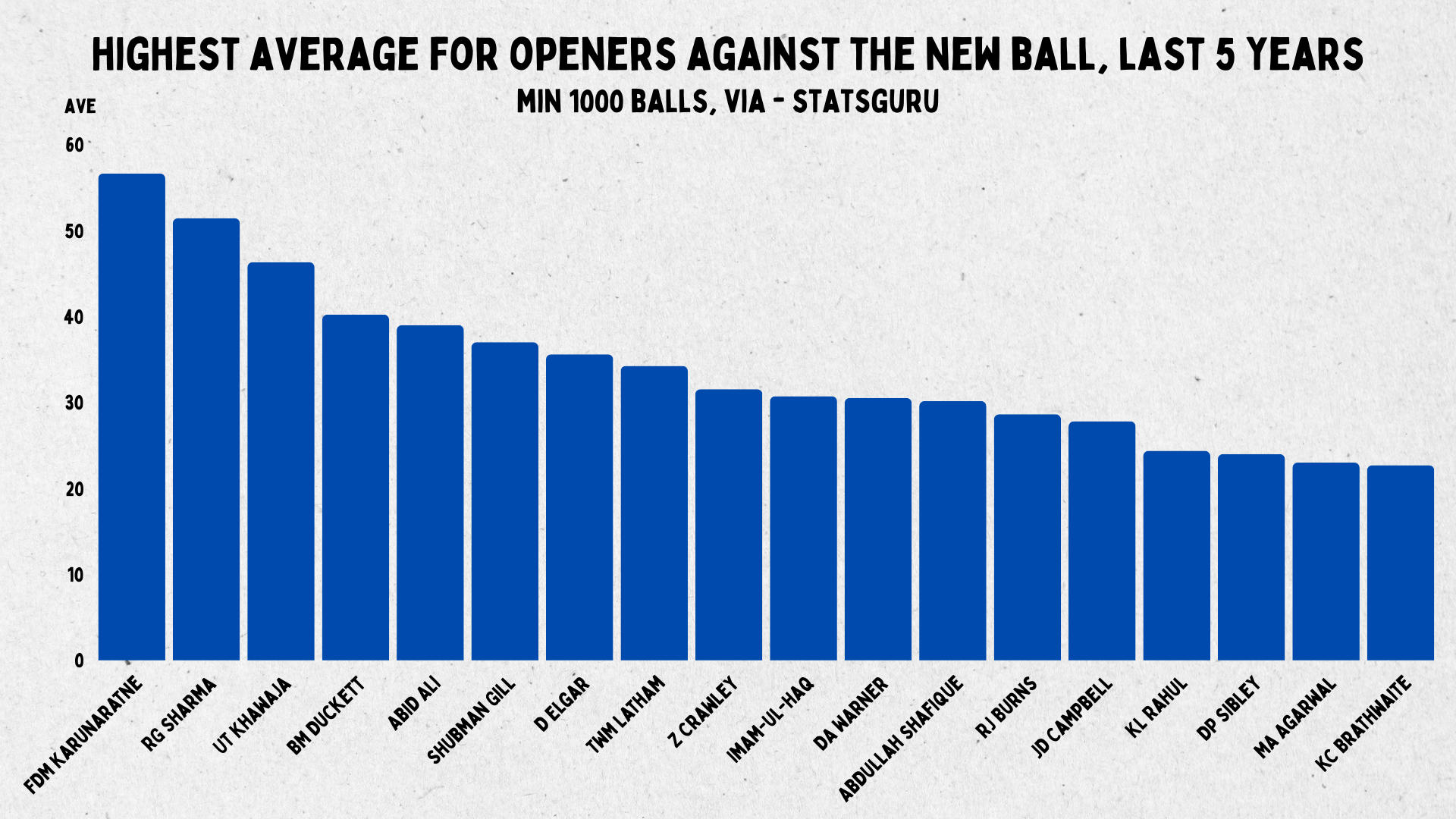
Only Rohit, Duckett, Karunaratne, and Conway average above 45 against pace in this time period. Khawaja is not too far behind, averaging 42. A lot of the low scores are from the wobbleball. Remember it was only 10 years ago opening was briefly seen as an easier job. That is no longer the case.
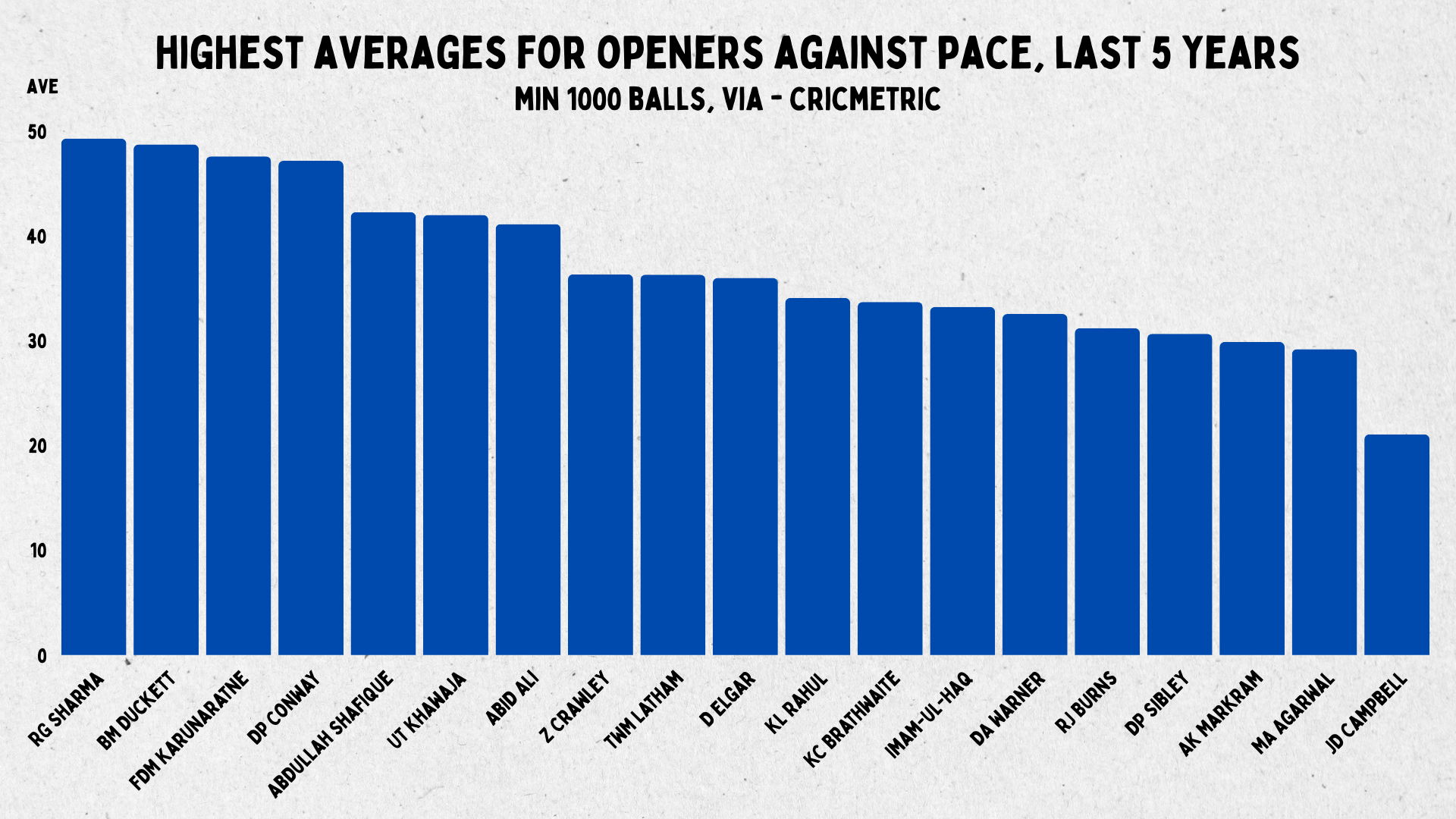
Khawaja and Karunaratne average over 60. Imam and Rohit are above 50. Shoutout to Yashasvi Jaiswal, who has a Bradmanesque average of 112 against spin, but misses the cutoff. Openers often have high marks against the turning ball, one reason is that they are set when they face it.
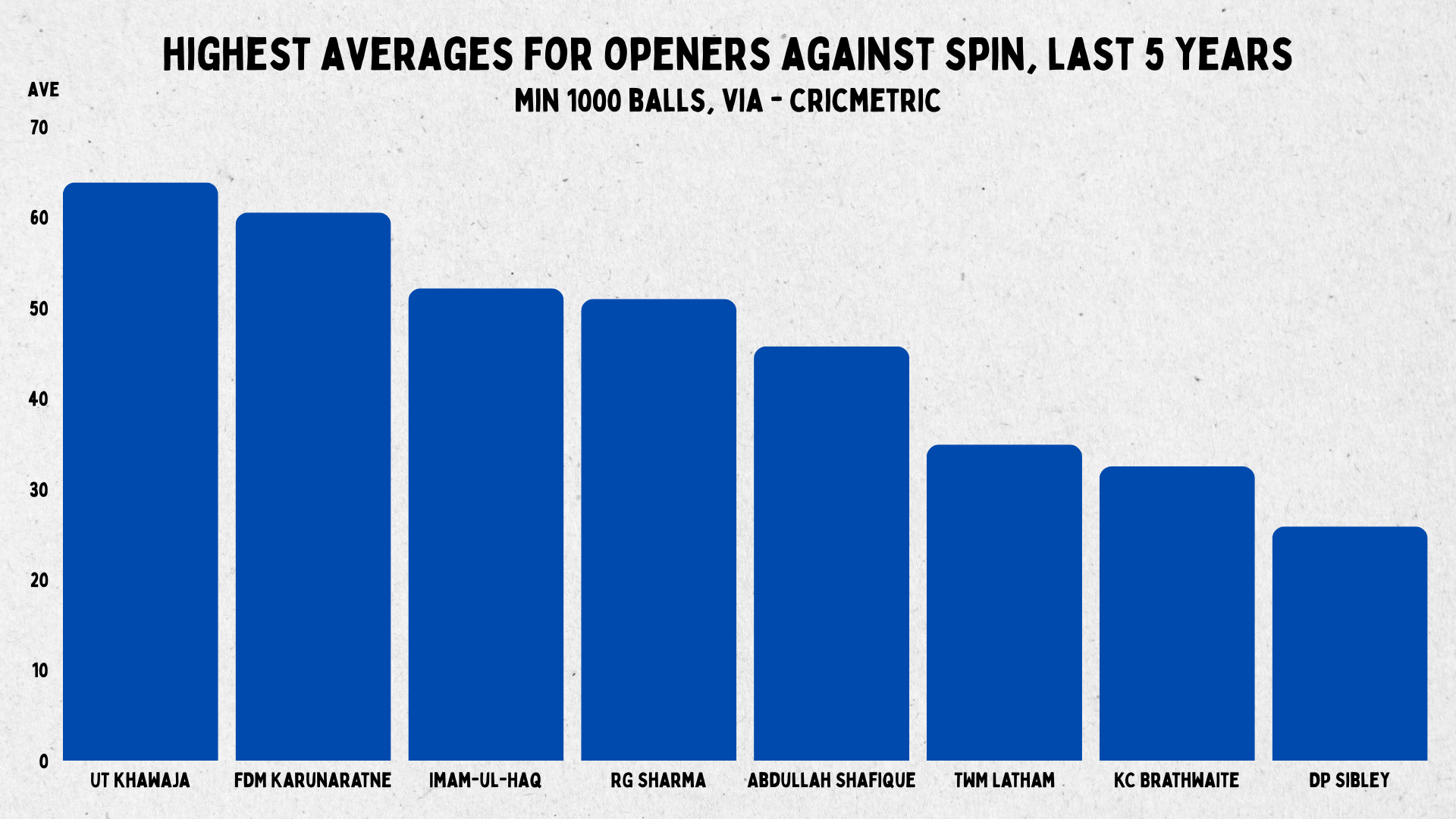
A batter’s match factor ratio compares their average to the rest of the top six batters featuring in those games. Rohit averages nearly 1.5 times more than the rest of the top six batters in the matches he plays - making him a clear standout on this metric. Those incredible innings when no one else could score at home are what drives this. Khawaja and Karunaratne do well too.
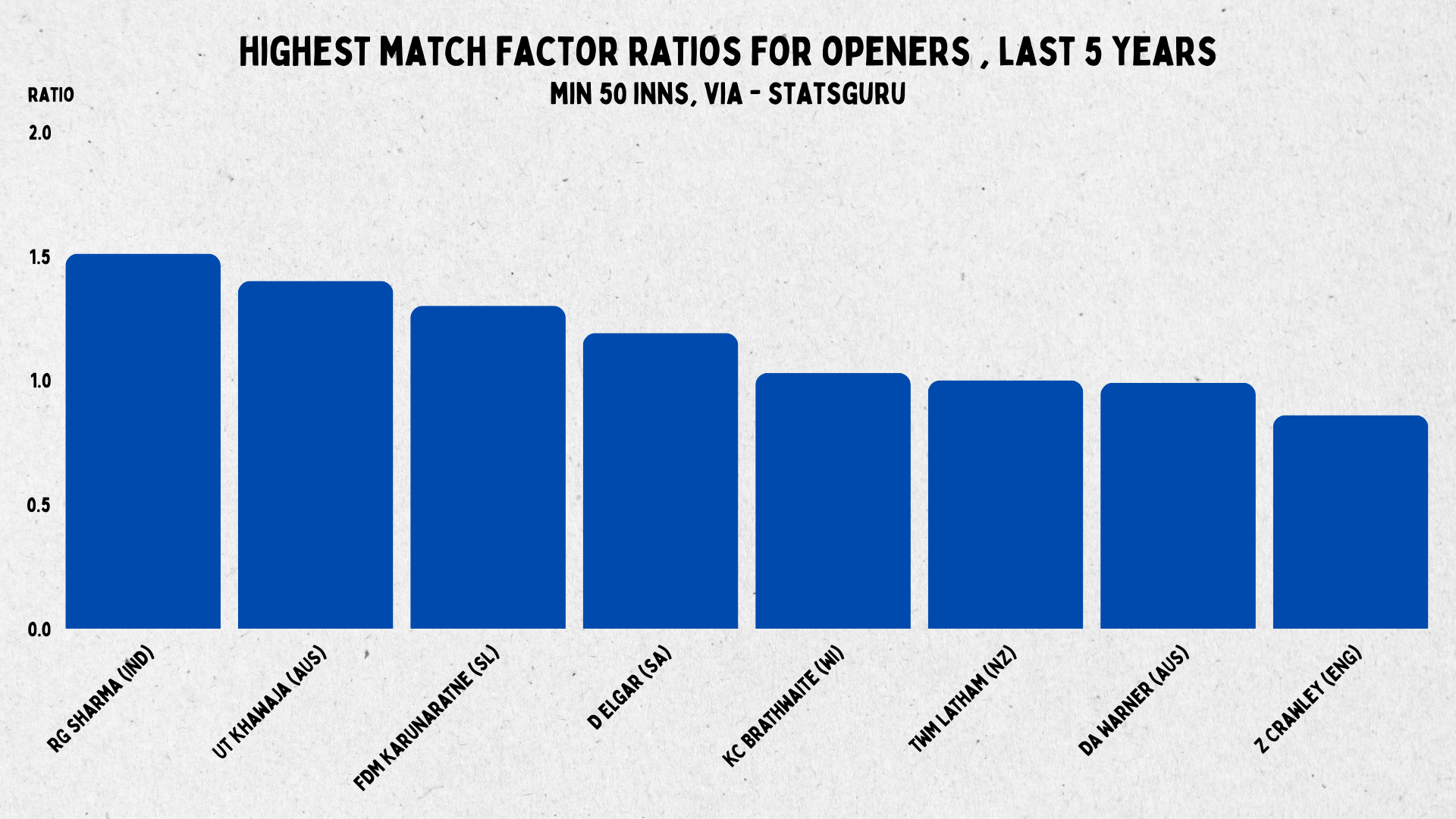
So I think we can prove these are the best three, but the question is who has the best claim to be number one?
In Test history, successful teams have often used attacking openers like Victor Trumper, Gordon Greenidge, Matthew Hayden, Virender Sehwag and David Warner to disrupt the opposition bowlers.
Virat Kohli’s thought process behind promoting Rohit Sharma was quite similar, and he even mentions how Rohit had been promoted in one-day cricket.
But Rohit did not have a terrible record in the middle order. However, it is worth noting that he played on a lot more batting-friendly surfaces back then - his teammates averaged more than him. Now he is averaging nearly 10 runs extra than the rest of the Indian top six and 22 more than the opposition in the matches he has played as an opener, which is huge.
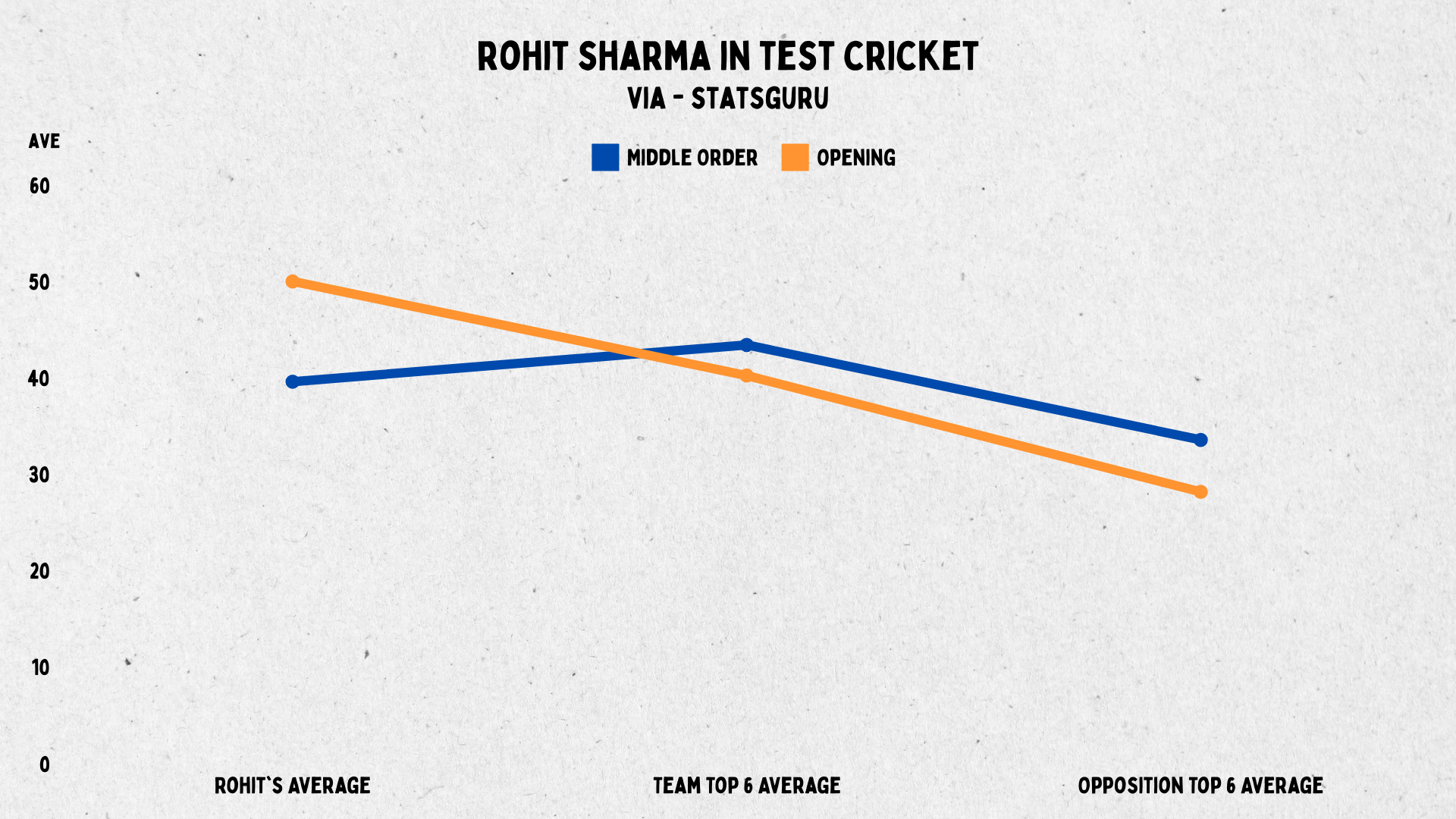
His big problem as a middle order player was away from home. He has now seen a significant improvement on that front. The Indian skipper still averages over 50 at home, despite the spin-friendly pitches in 2021-23.
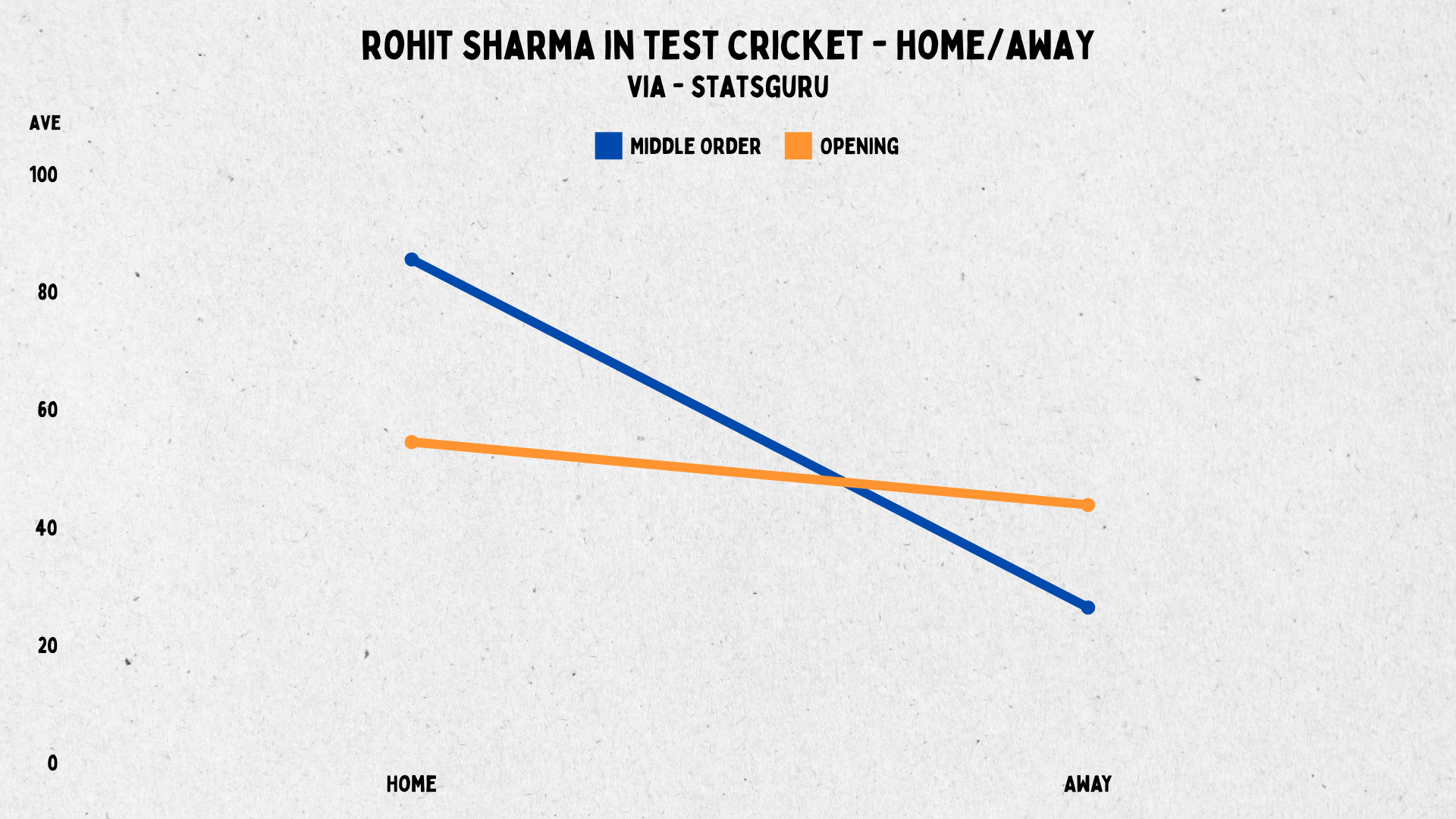
Rohit has an outstanding record against pace both home & away, in an era where the wobble ball has been prominent. It is interesting that he is at his best against pacers with the new ball and spinners afterwards.
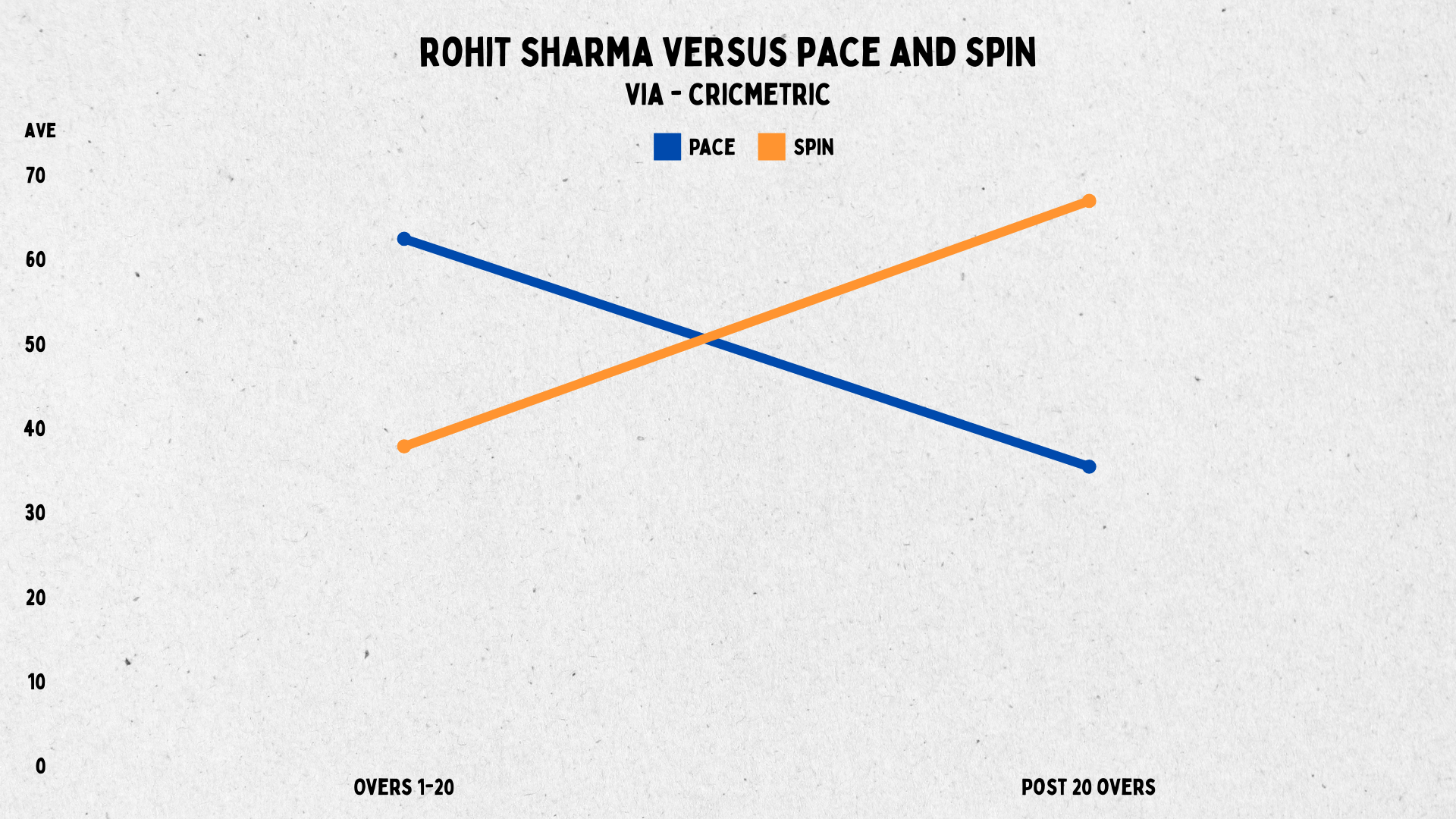
Rohit’s record from six Tests in England is superb. He does have a low average in Australia and South Africa. However, he has played only two Tests each in both countries. Even his huge average in the West Indies is from a couple of matches.
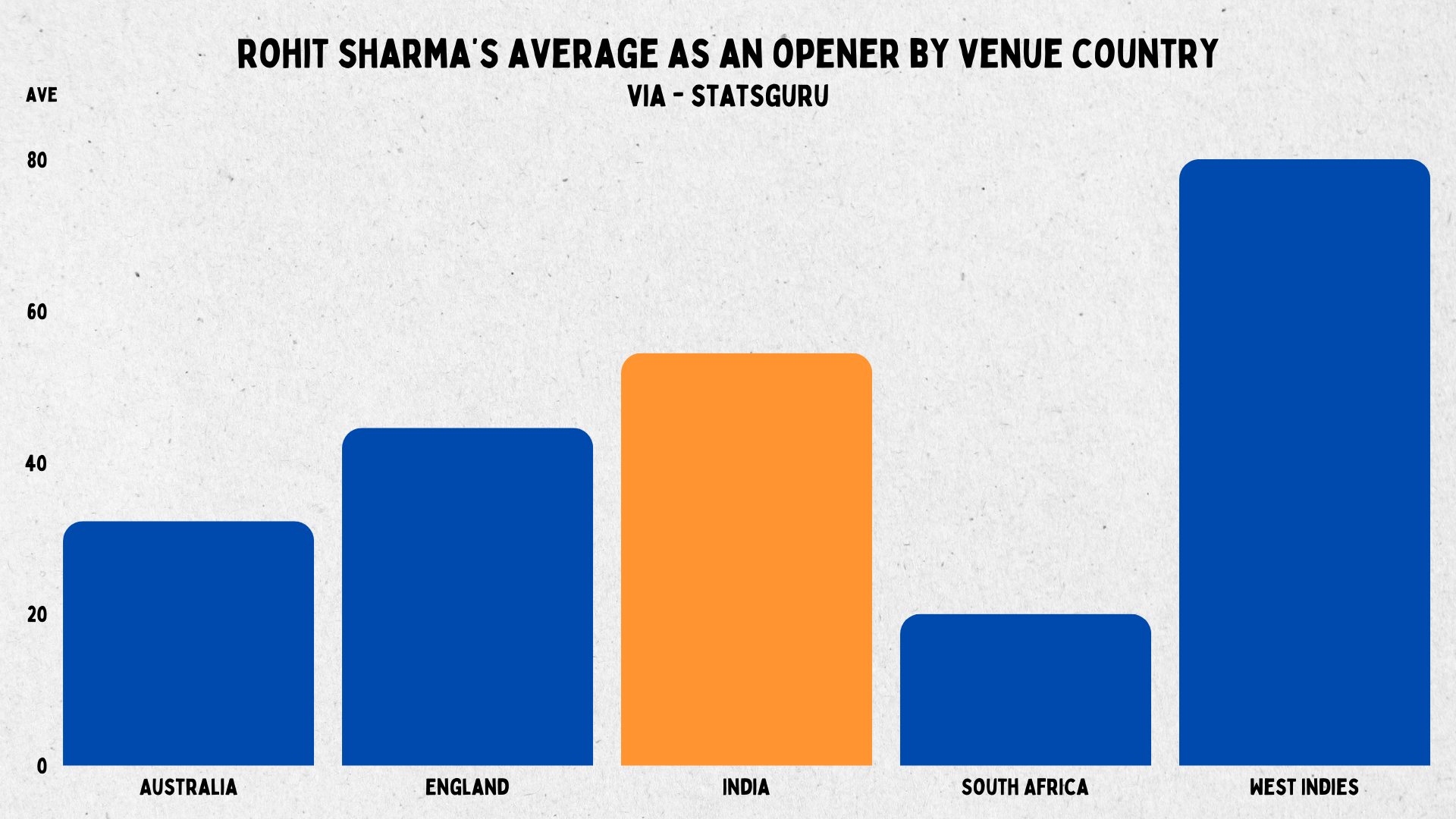
He averages 41% more than the rest of the top six batters in England, and 65% in India. Both him and Rishabh Pant have been particularly good on wickets that have been quite helpful for the spinners.
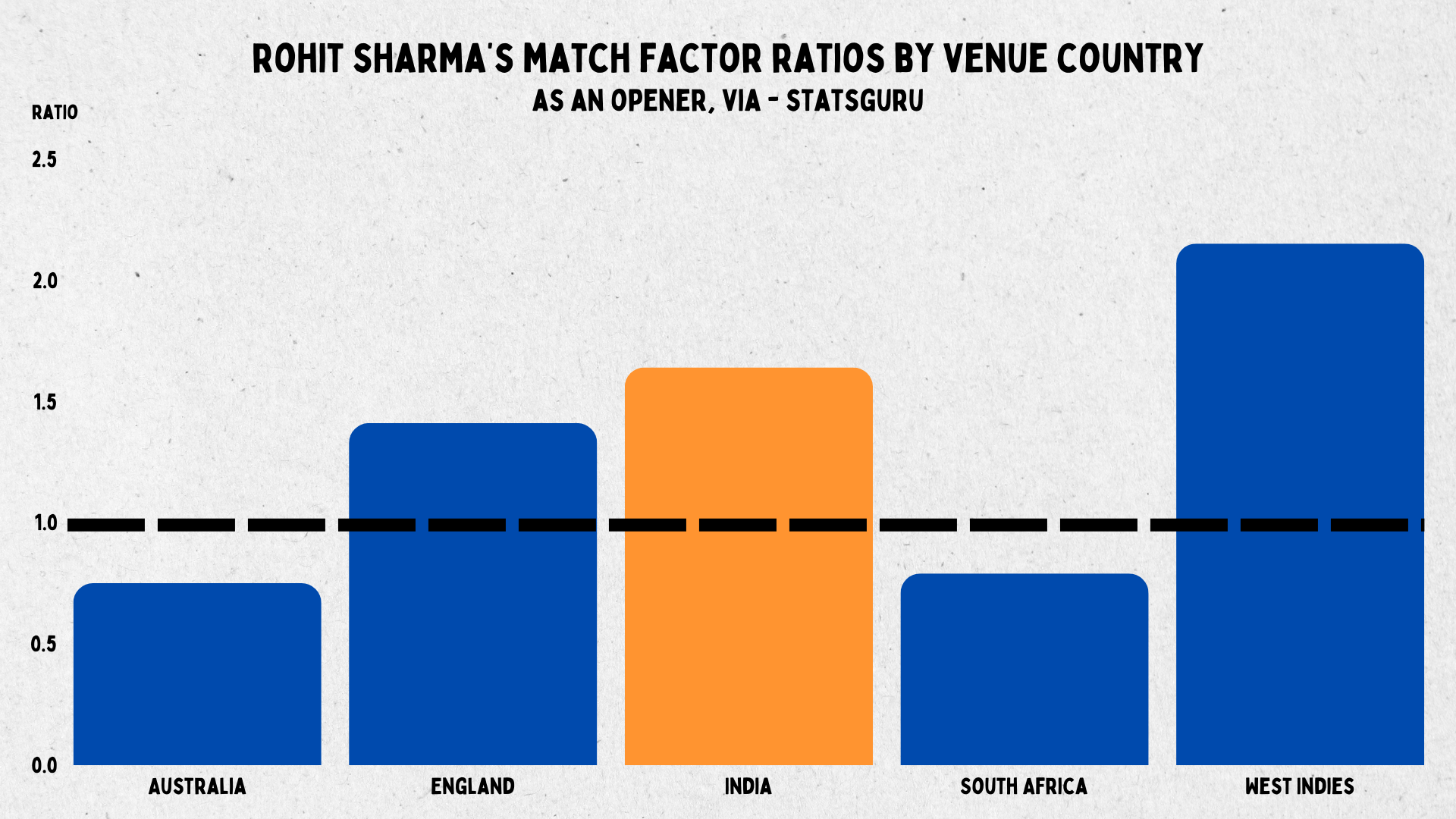
It will be interesting to see how he fares in the upcoming Border-Gavaskar Trophy in 2024/25, because Australia is a country which should suit his natural style of play. He did a good job to handle the new ball the last time, but could not cash in and make a big score in the four innings he played.
Rohit Sharma was 32 when he started opening the batting for India in Test cricket. The fact that he was able to crack Tests after that age is incredible.
But talking about old career turns, Usman Khawaja had opened in only seven innings in Test cricket before January 2022. He scored 484 runs at an average of 96.8. Travis Head was ruled out of the SCG Test, so Khawaja slotted in at number 5 and made twin tons. After Head returned in the next match, Marcus Harris got the axe and Khawaja went up the order to open the innings with Warner.
Often players start opening near their peak batting years, and therefore make it work because of that. Khawaja was 35 when he went to the top of the order.
Despite those two twin tons, Khawaja averages 15 more when he is opening the innings in Test cricket. But note that this also includes his opening record before 2022.
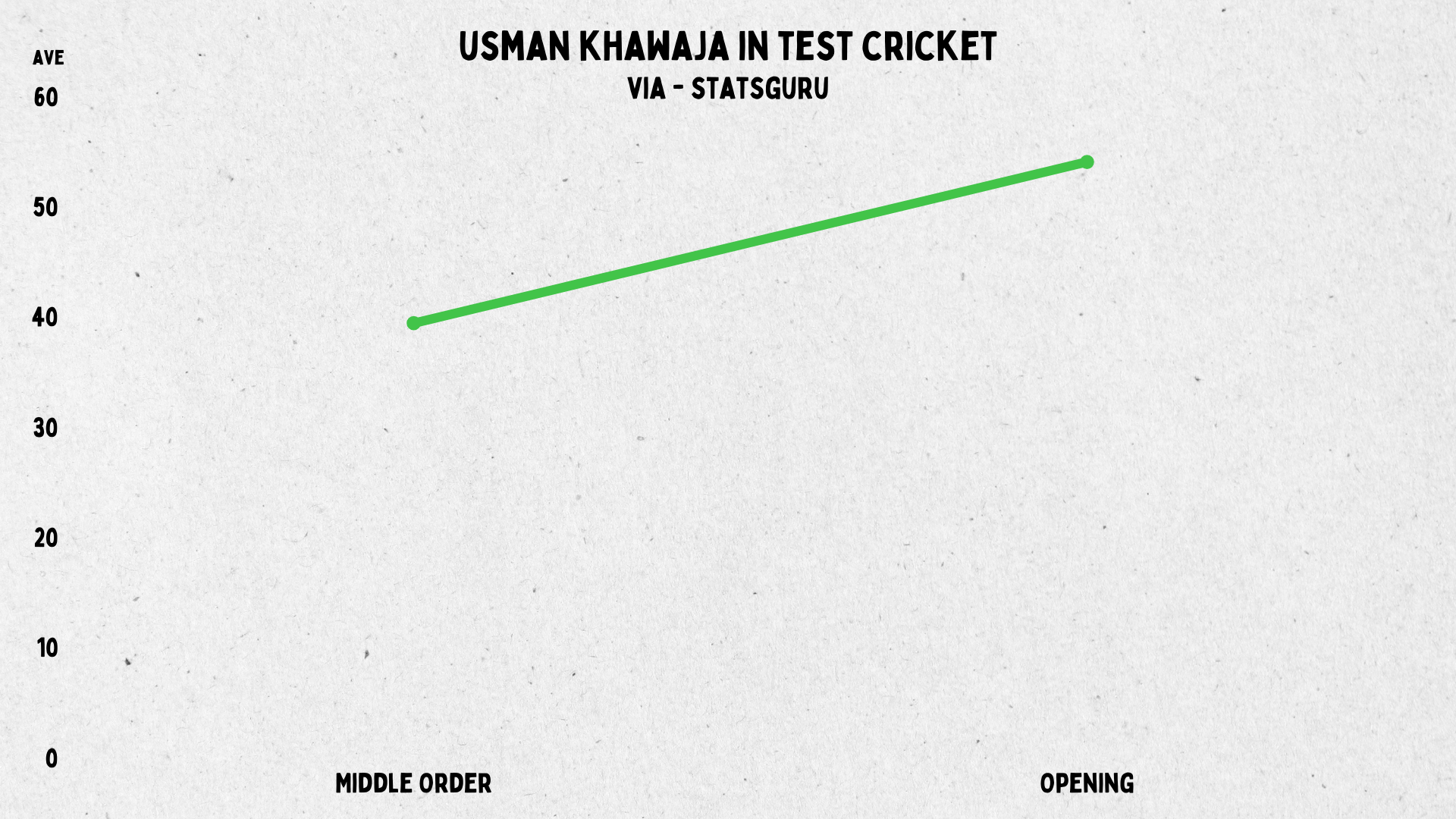
Khawaja averages 10 more than his teammates and 18 more than his opponent's top six batters since he started opening full time.
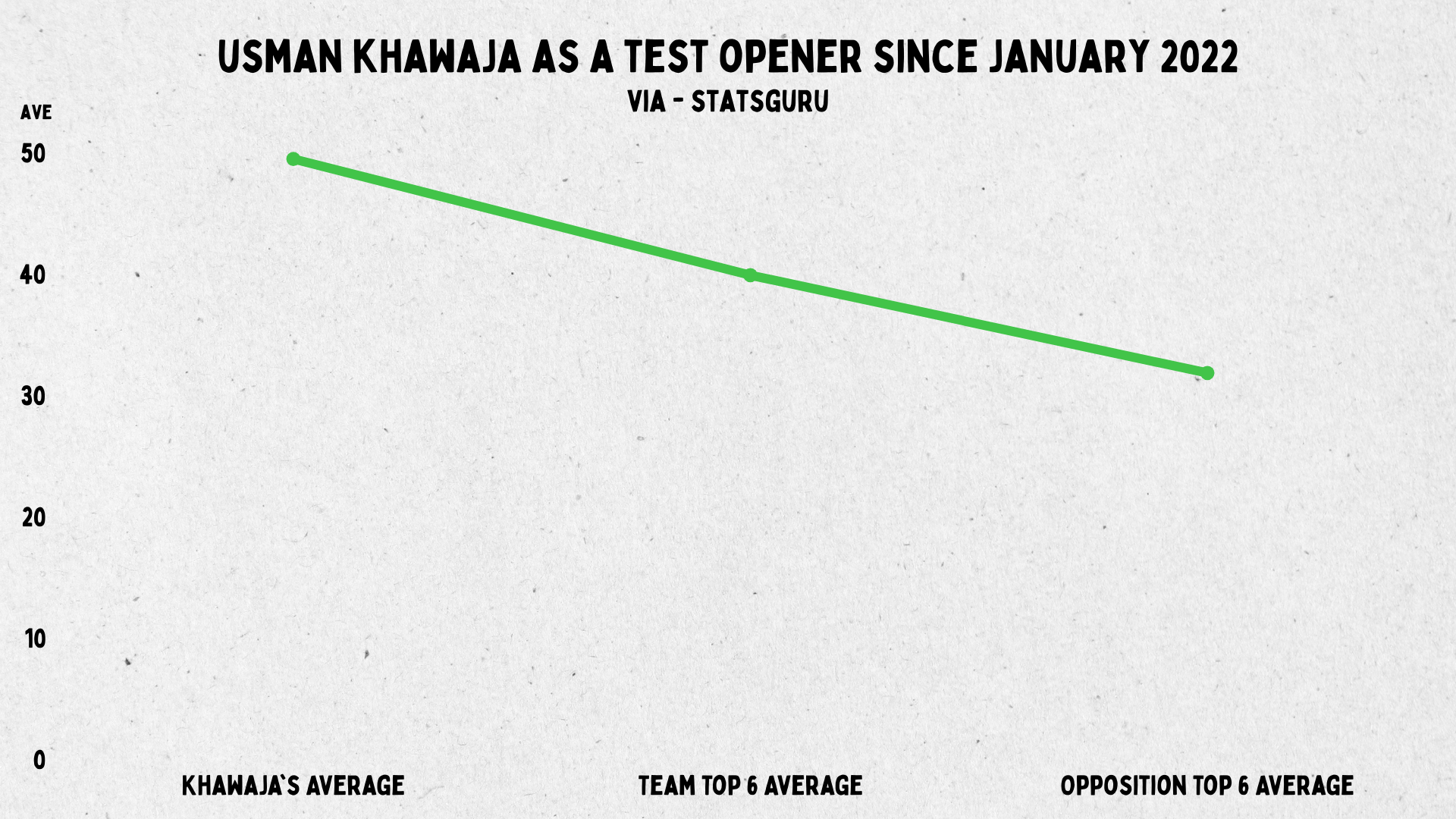
Much like Rohit, Khawaja was actually better at home when he played in the middle order. The major differentiator has been his away record, where he averages 30 runs more.
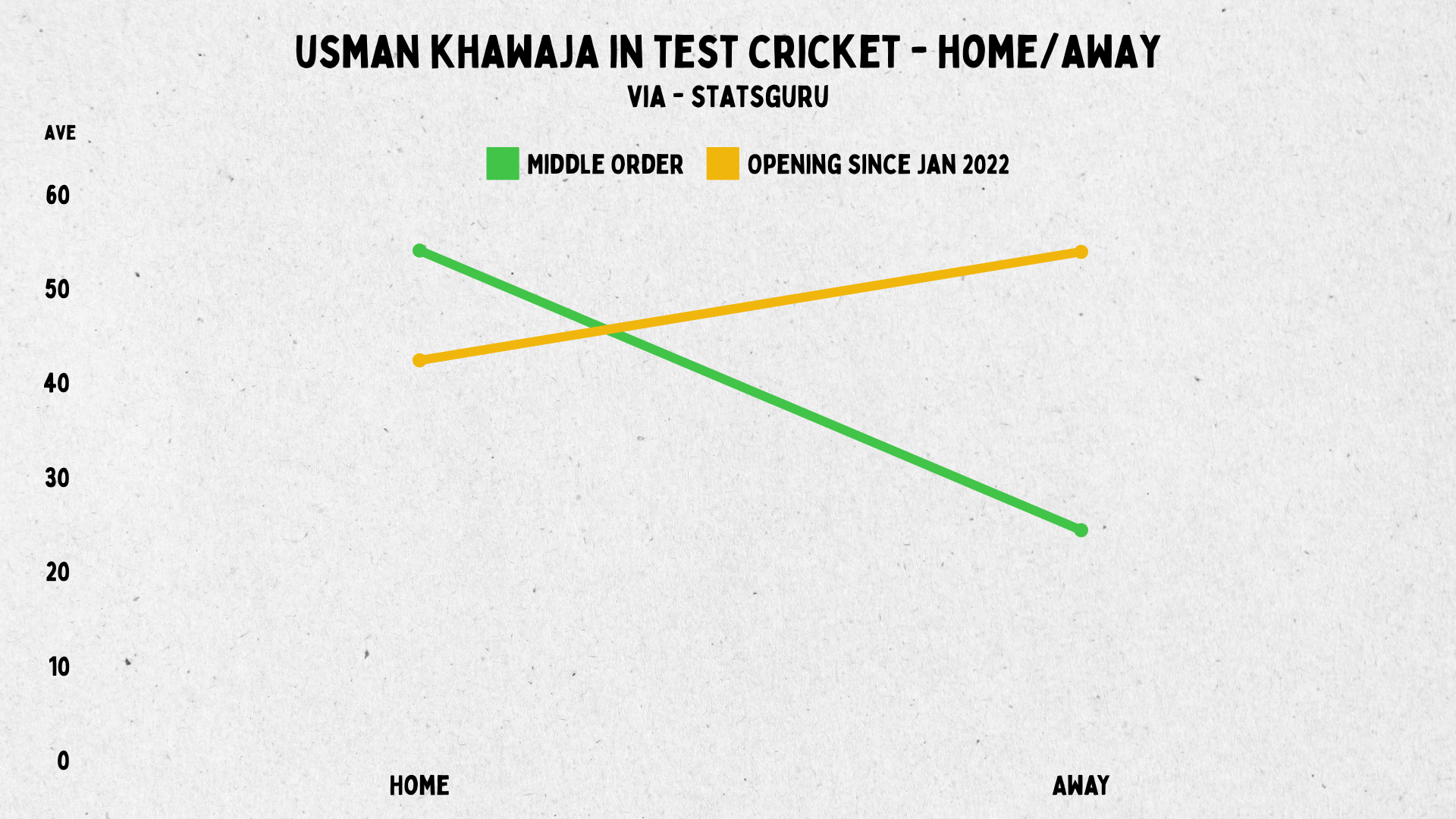
Khawaja’s averages against both pace and spin rise after getting through the first 20 overs. But it would be fair to say that he prefers facing spin a lot more than pace. Which makes sense, because he was a middle order player. But it also shows he has found a way to handle the quicks, which again is incredible considering his age.
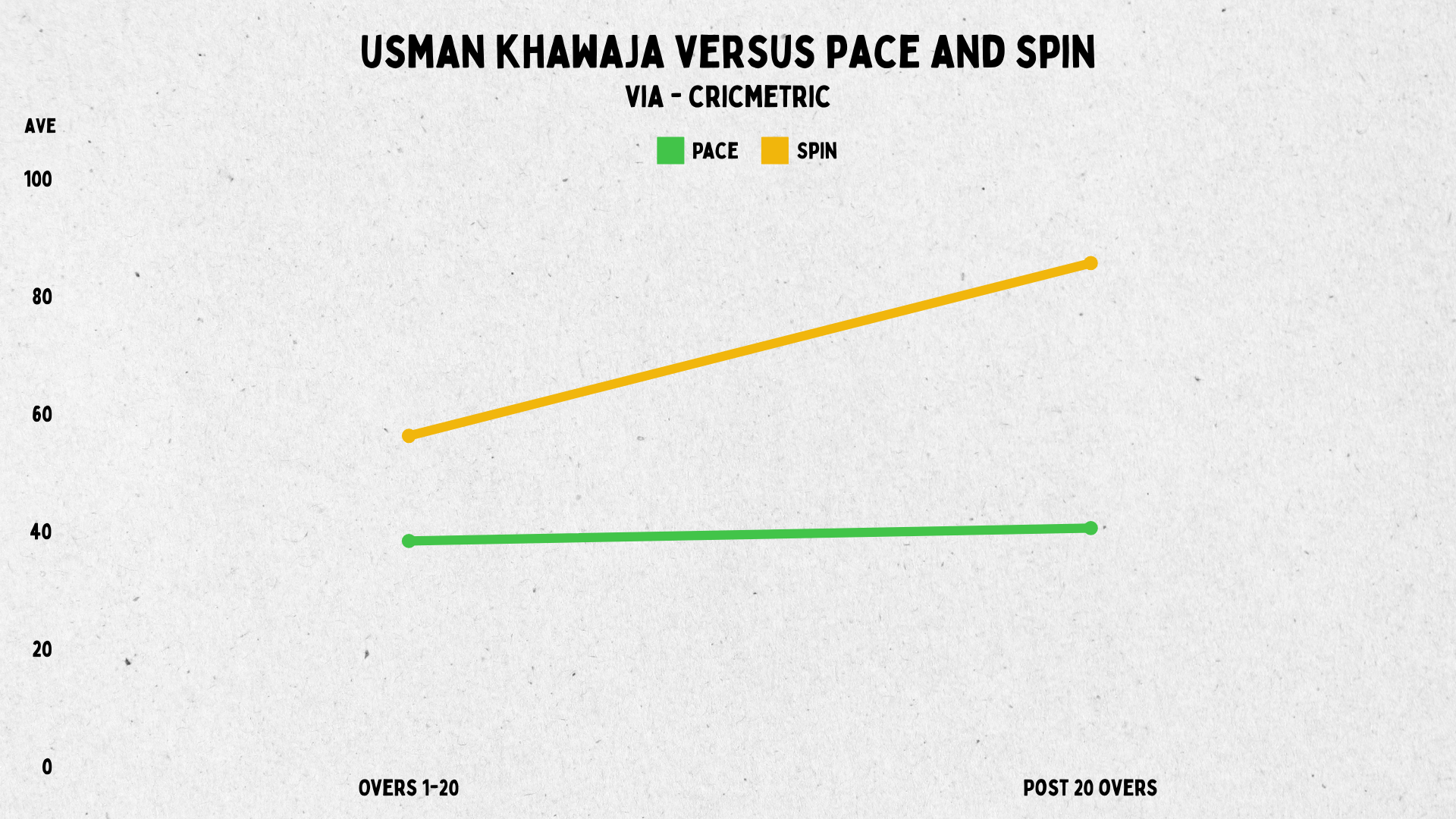
And that adds up when you look at his record by venue country. He averages over 40 in India and Sri Lanka, and a mammoth 165 in Pakistan. Though the wickets in Pakistan helped, you still have to score the runs. He also averaged over 40 in England, top-scoring in the Ashes. He didn’t get going in the most recent series against New Zealand, but that is the only country where he does not average 40 or more.
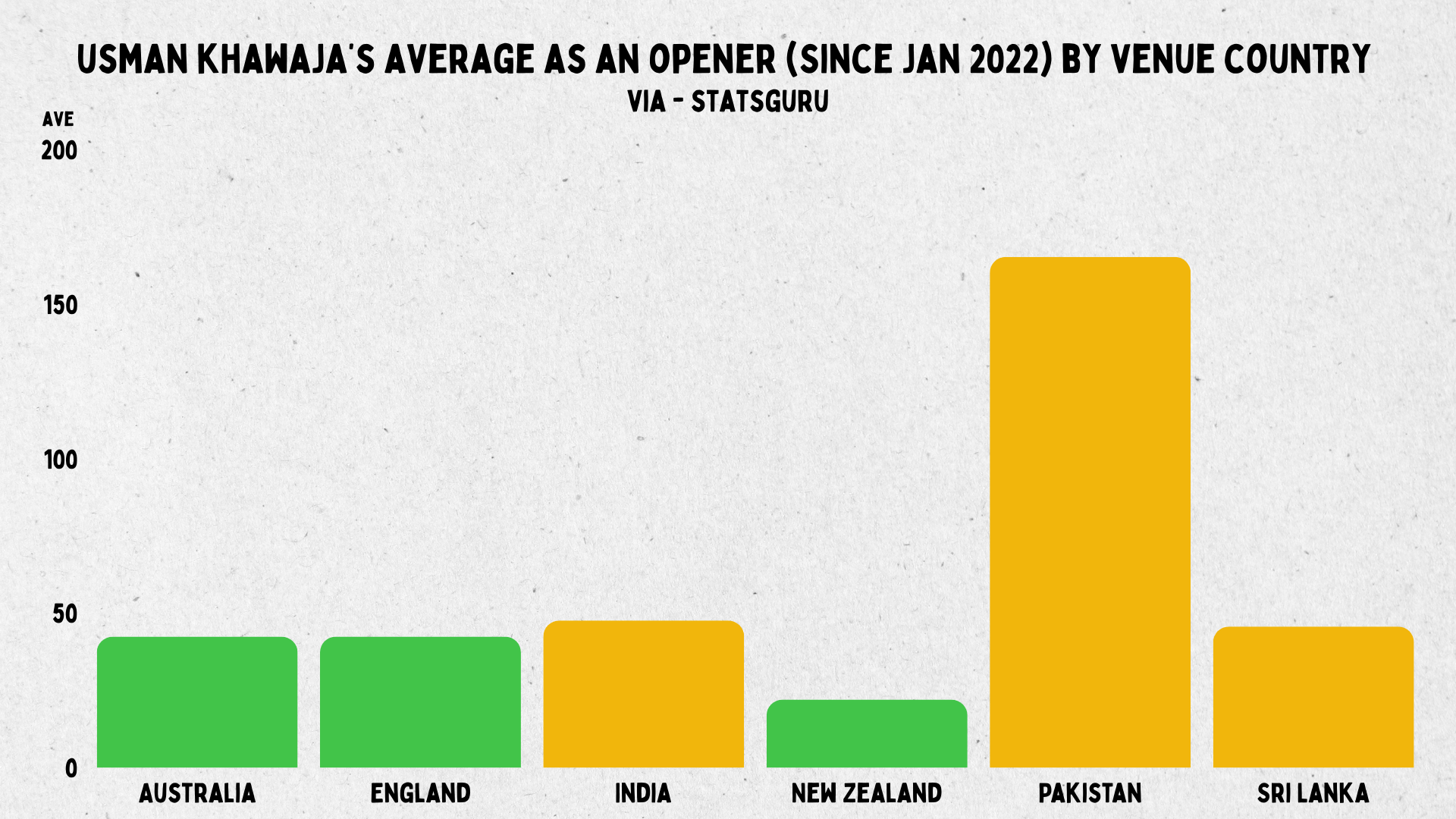
Even though Pakistan dished out some of the best batting wickets on that tour, Khawaja was still the standout - averaging more than three times the rest of the top six batters. And this was his first overseas tour since he was promoted full time. A match factor ratio of 1.51 in India is also massive. He scored 81 at Delhi in a losing cause, 60 at Indore on a wicket where scoring runs was probably the toughest, and 180 in the final Test at Ahmedabad on a run-fest.
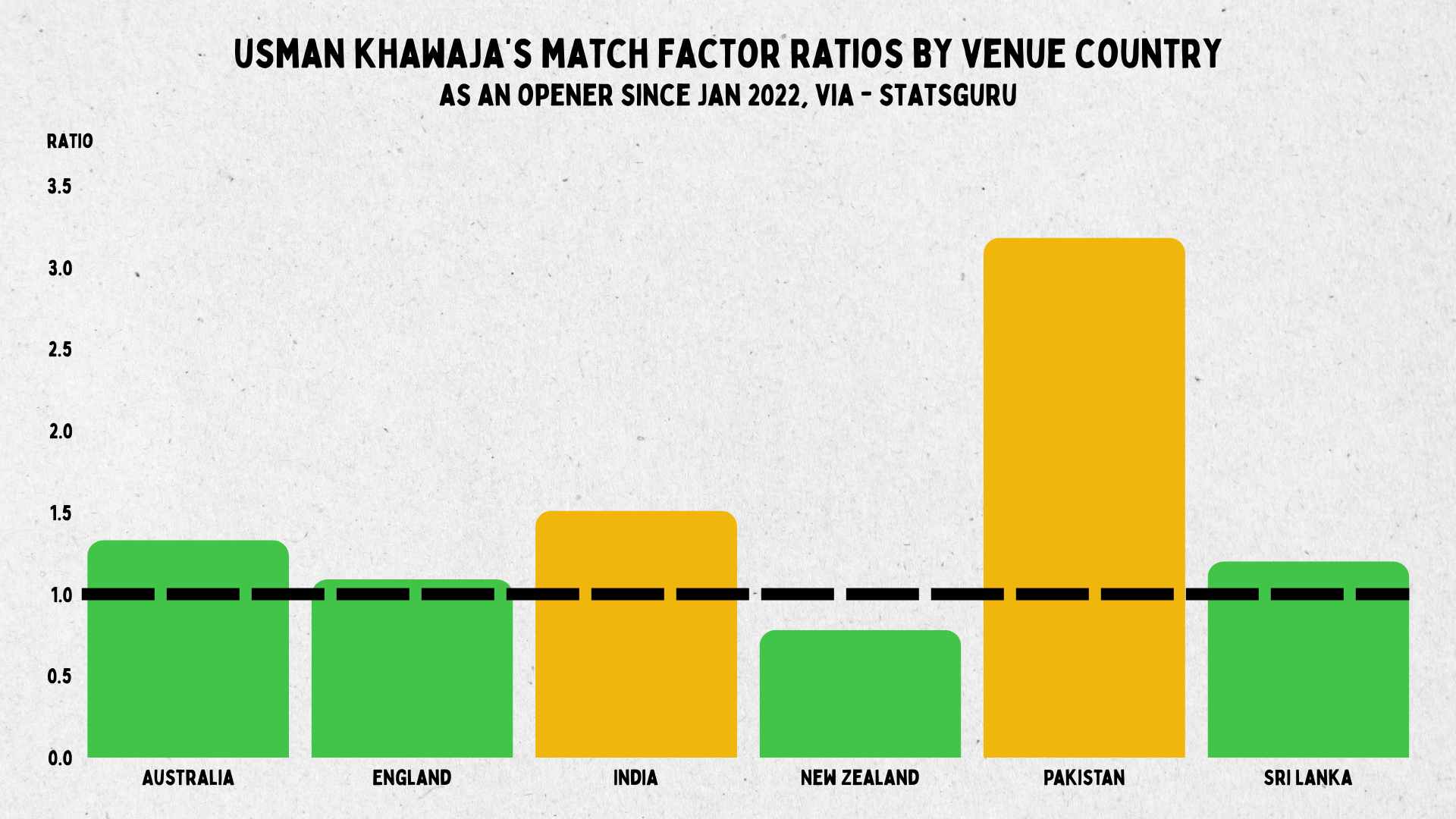
Khawaja has two interesting challenges coming up, touring Sri Lanka, and then playing a well rounded India attack at home. While he has played a lot of cricket, and made way more runs than expected, we’ll have a better idea after these tours.
Karunaratne is of our short list, the only actual opener. He averages 14 more than his teammates, and 11 more than his opponents in the top six. Outside starting his first-class career briefly down the order, Karunaratne has been a full time opener ever since. That is the only job he’s ever had at Test level.
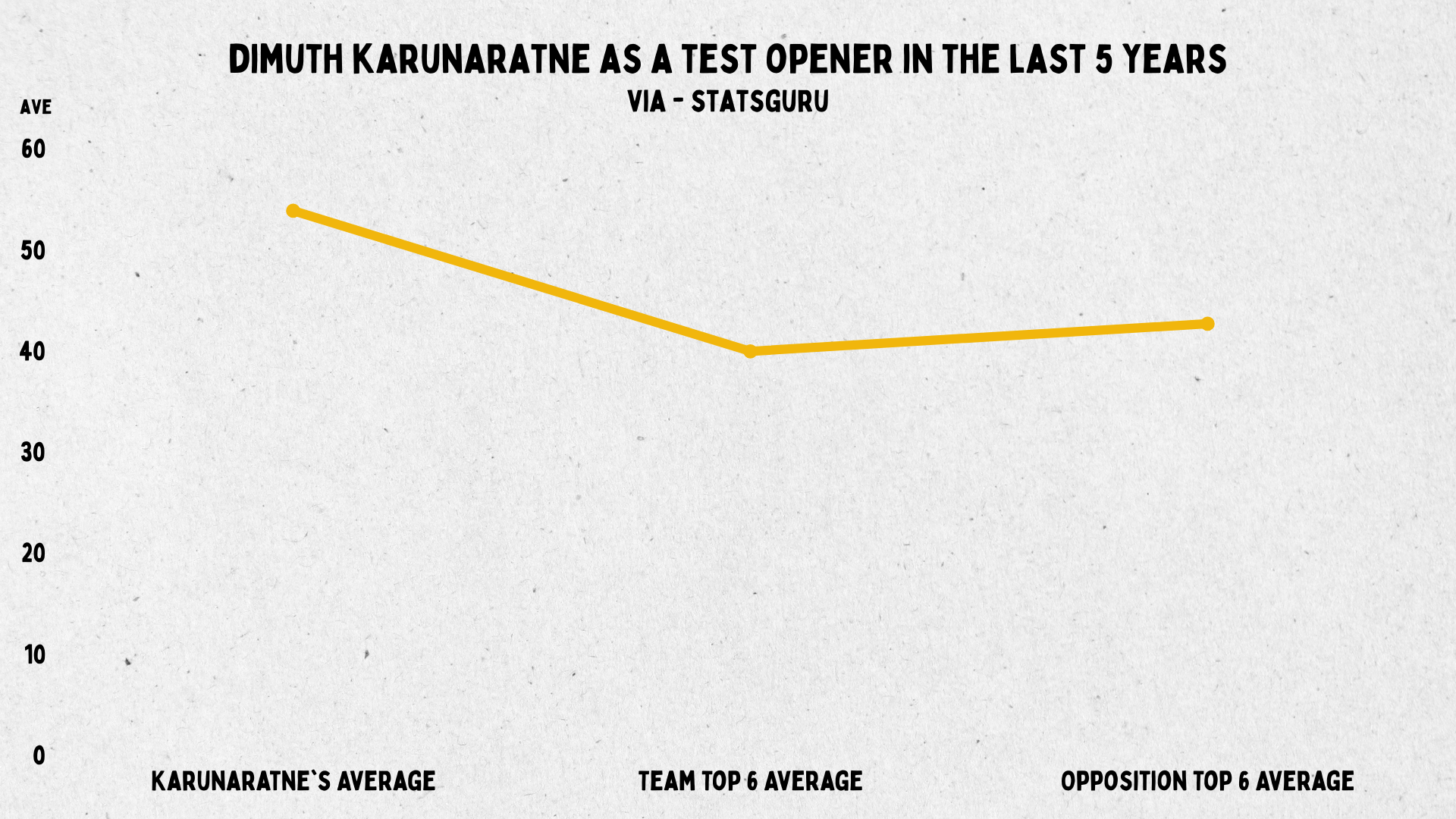
He prefers playing at home, but his away average of 37.92 is not too bad either. He gets decent support from his teammates on the road like Angelo Mathews and Dhananjay de Silva. At home, he is the main character, averaging almost 30 runs more than the rest of his teammates.
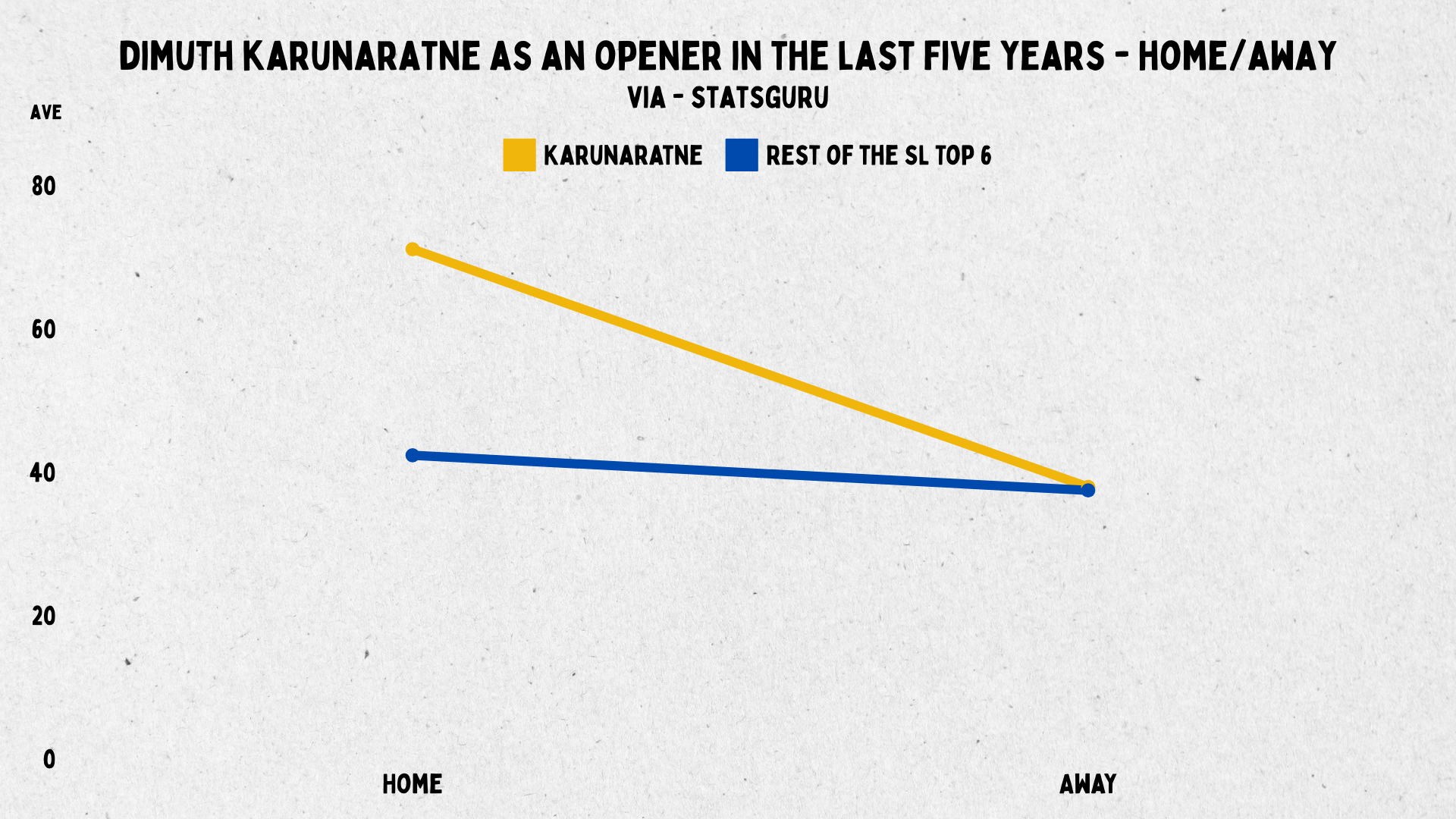
Karunaratne is at his best against both pace and spin when he is facing the new ball. His spin numbers continue to be outstanding throughout the course of the innings.
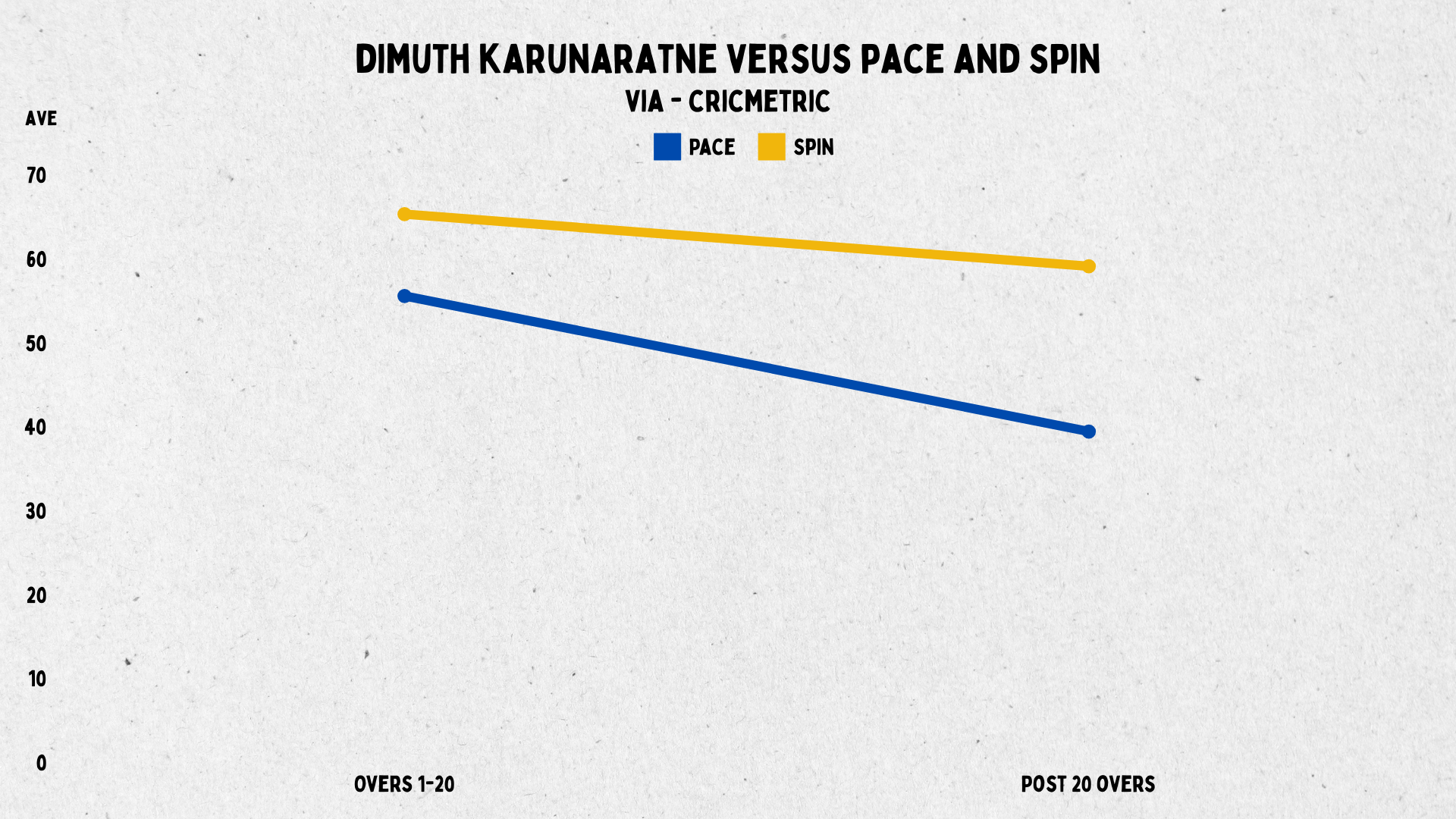
Before we look at his records by location, it is worth noting that he only plays two test match series - both home & away. This means that bowlers can't really work him out but he can't cash in the same way as other players when he's on top.
He prefers playing in Asia, averaging above 40 in Bangladesh, India and at home (except Pakistan, where he averages 33.33). But he also averages over 50 in New Zealand, which is not exactly the best place to be an opener.
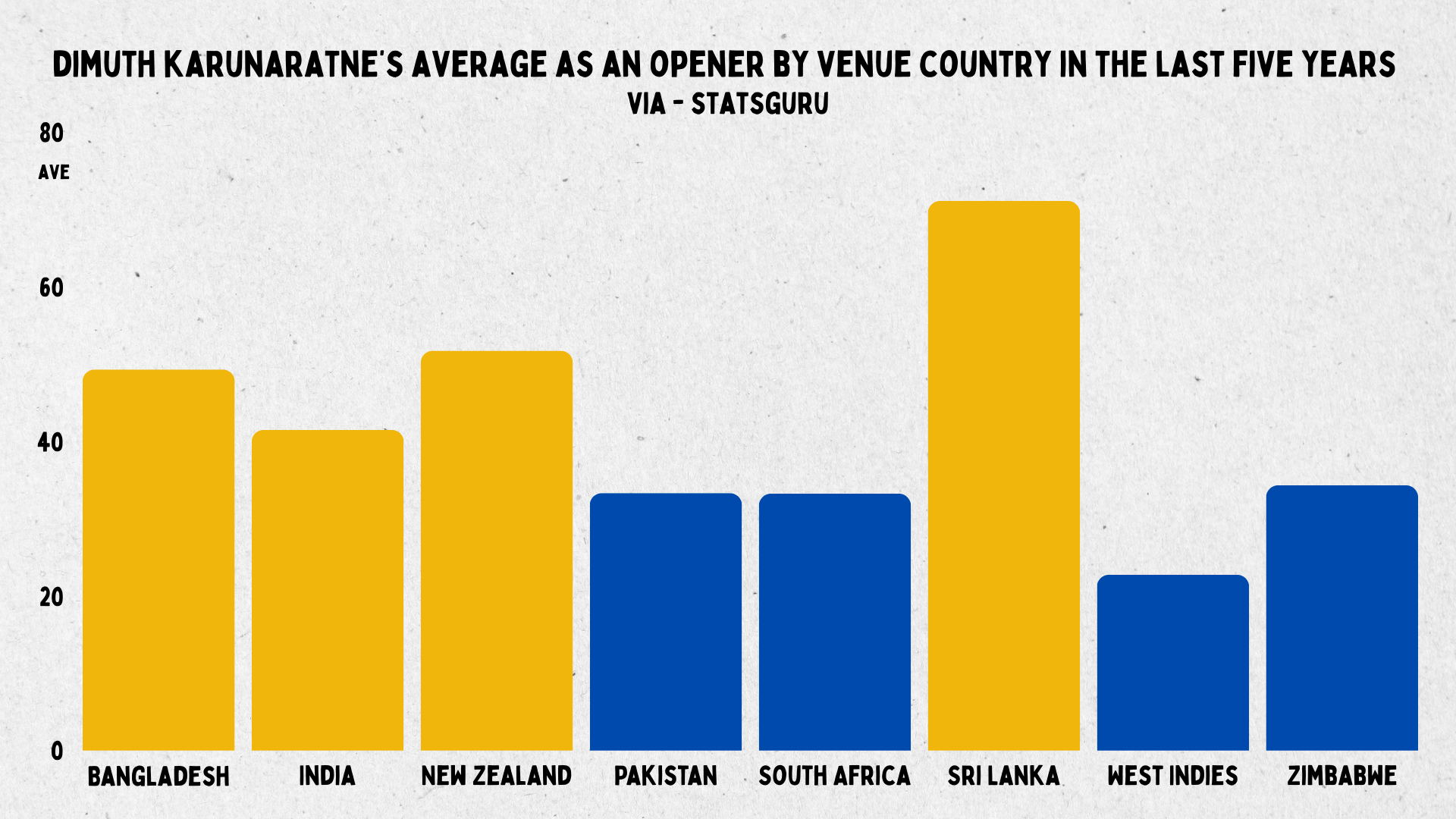
He doesn’t play in Australia or England in this time period, which is a bit of a shame. But Sri Lanka will tour England this summer, which should be a good opportunity.
His record at home is terrific. But who does he score those runs against? He averages above 100 against Afghanistan, Bangladesh and Ireland, 75 against New Zealand and almost 70 against West Indies. His average of 45.66 against Australia looks like a pale shadow compared to the rest, but is actually more than fine. He struggled against Pakistan, who toured Sri Lanka twice in this time period.
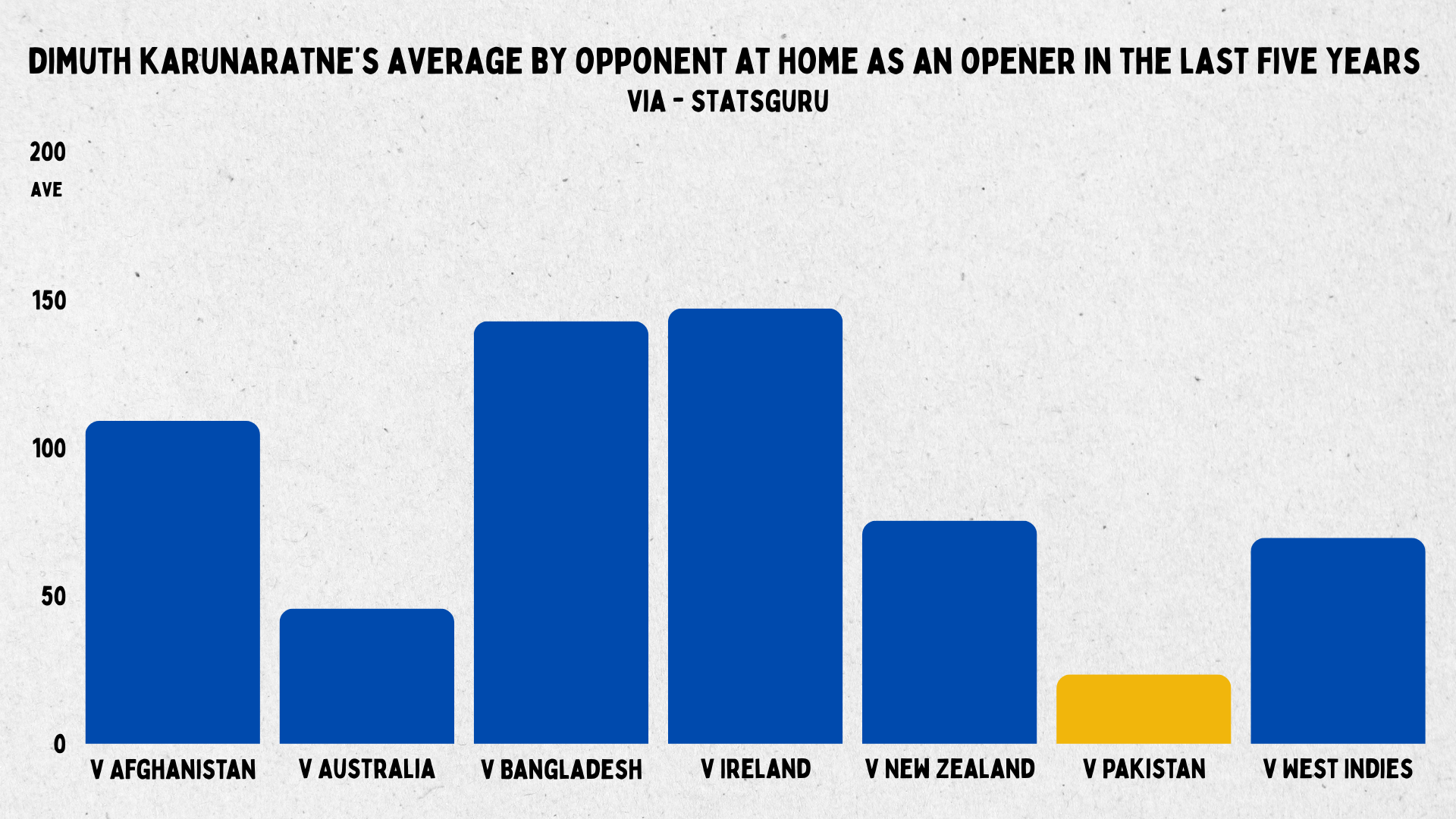
When we look at the match factor ratios by country, he is above par in four countries. Although his match factor ratio is below 1 in South Africa, he actually scored a hundred at Johannesburg where the next best knock by a Sri Lankan batter in that innings was 36.
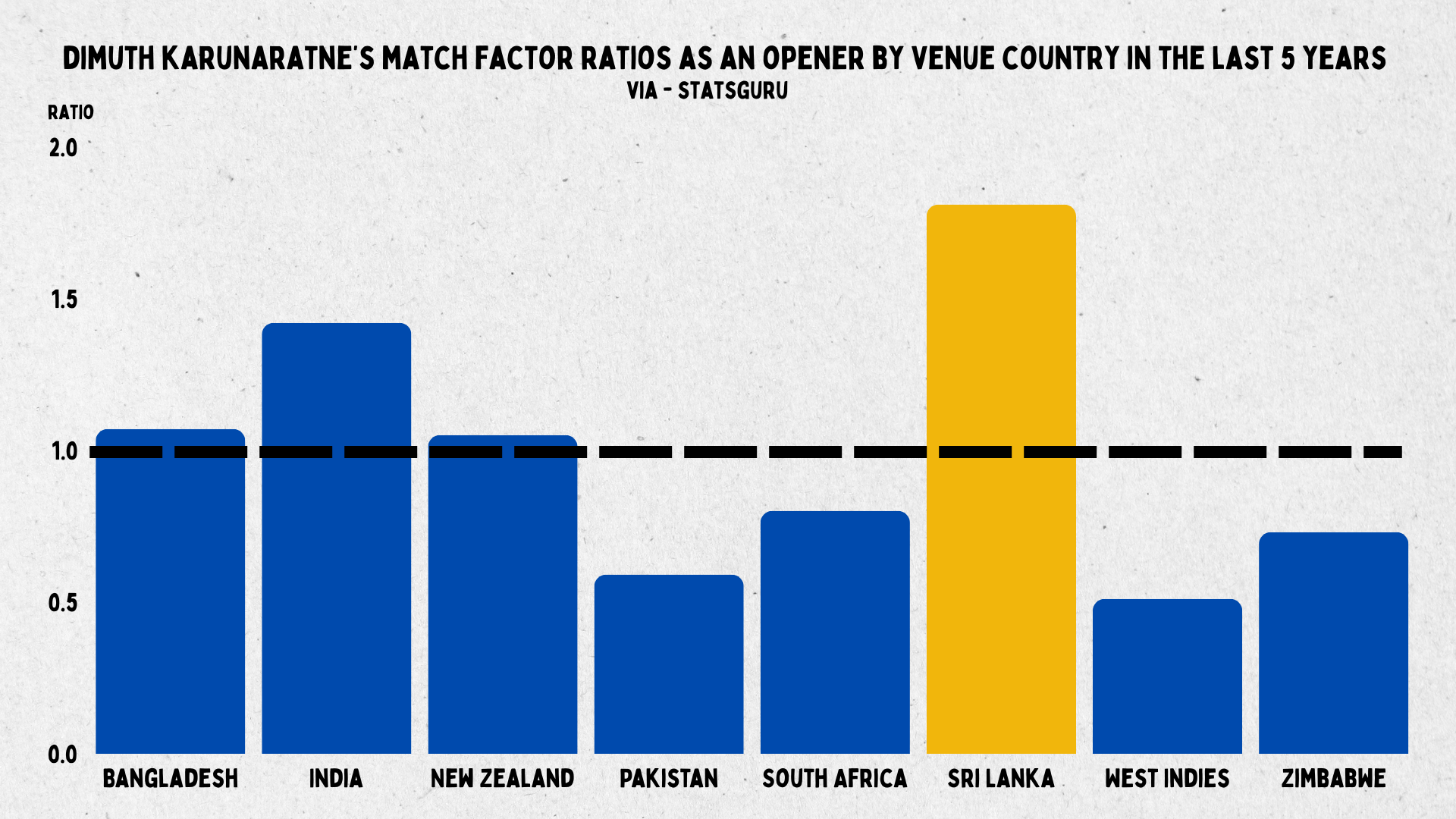
He failed to get going in the first Test at Centurion, which was a high-scoring match. He also does not cash in on the batting friendly surfaces in Pakistan, poor guy. He does not score runs in the West Indies.
Sri Lanka are set to tour Bangladesh, England and South Africa in this WTC cycle. If he does well in these games, particularly in the latter two being an Asian opener, it would enhance his legacy as one of Sri Lanka’s finest in the format.
The 35-year-old is already their fifth-highest run-getter of all time in Tests, one of the smartest players in our game and has a chance of finishing third behind Sangakkara and Jayawardene.
But what about directly comparing each player? Let’s have a look at how they perform compared to the other batters in their games. They have all had decent support from the rest of the batters in their team’s top six. However, the major differentiator is the away batters record. We know that India and Australia have a better bowling unit than Sri Lanka.
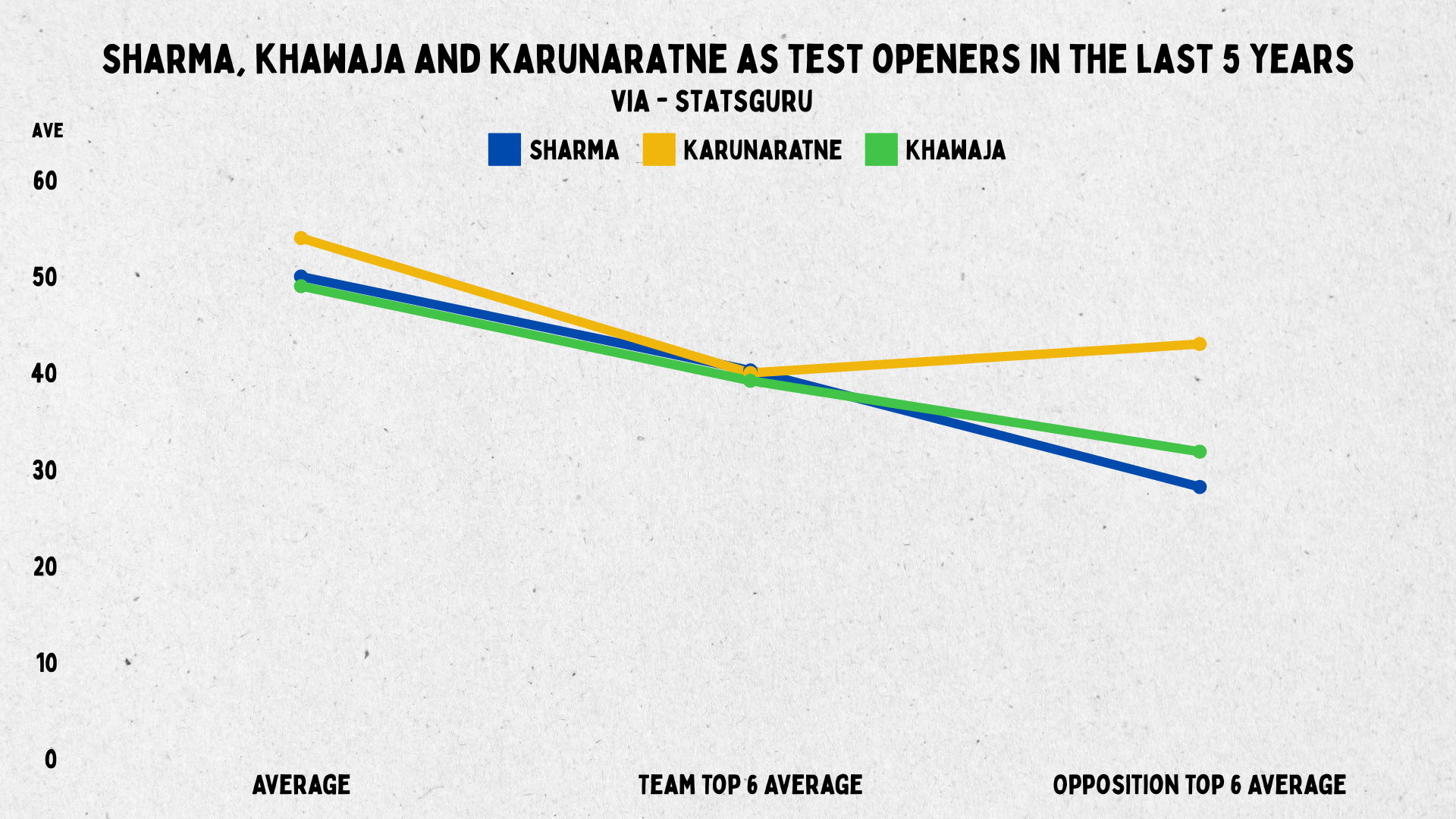
If a player is at the peak of their powers, it is not ideal to miss over a quarter of the team’s matches. Unfortunately, that is what happens with Rohit. He still plays a few more Tests than the other two, but also misses a fair amount of games - three in South Africa, two each in Australia, New Zealand, Bangladesh, and India, and one in England. Him playing these games could have gone either way, but what it meant is that India had to look for replacement openers.
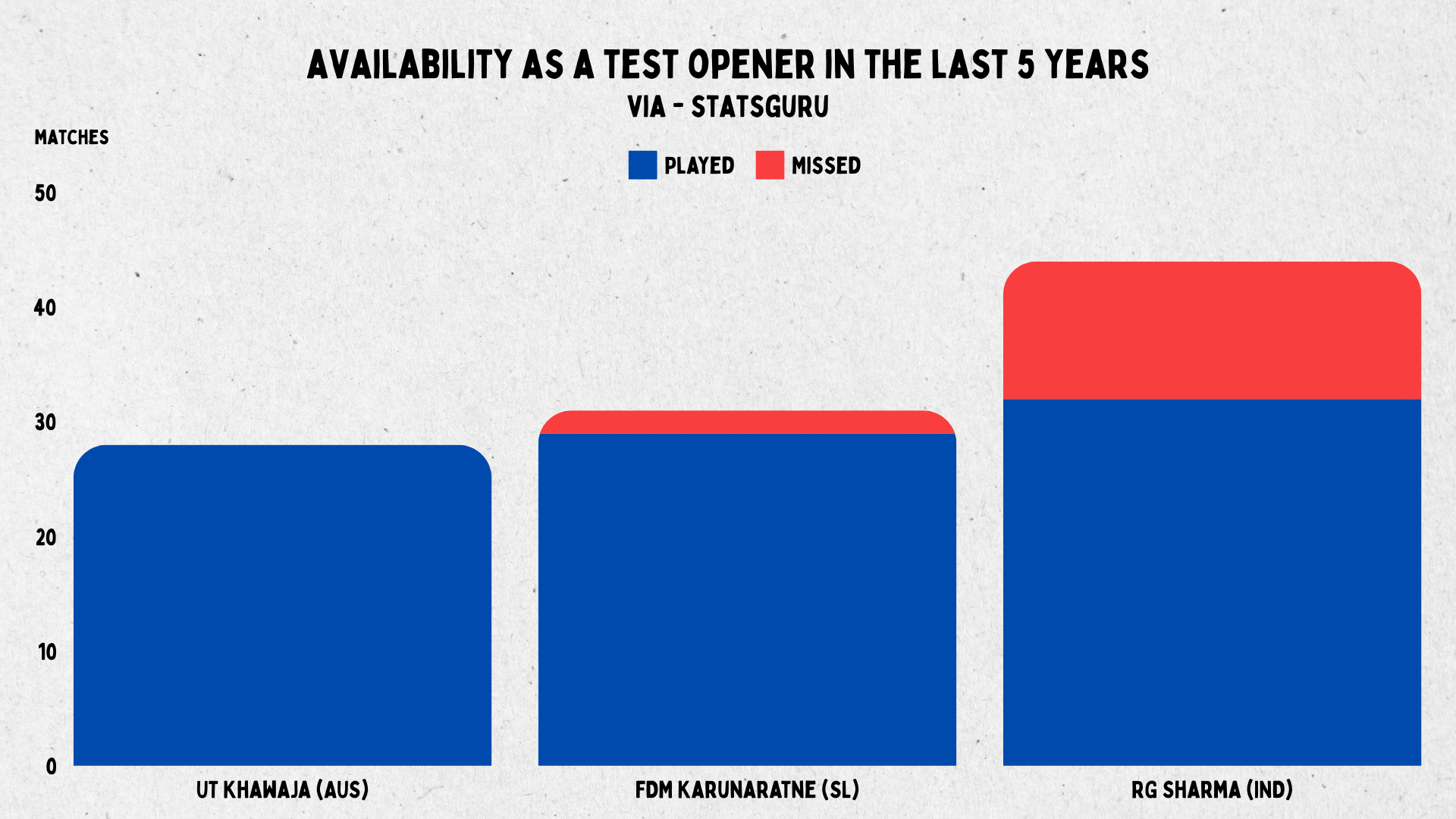
Both Rohit and Karunaratne have shown the ability to bat quickly when needed - which is reflected in the number of fifty-plus scores at a strike rate of over 60. Khawaja only has a couple of knocks above this mark - most of his innings have come at a strike rate in the 40s.
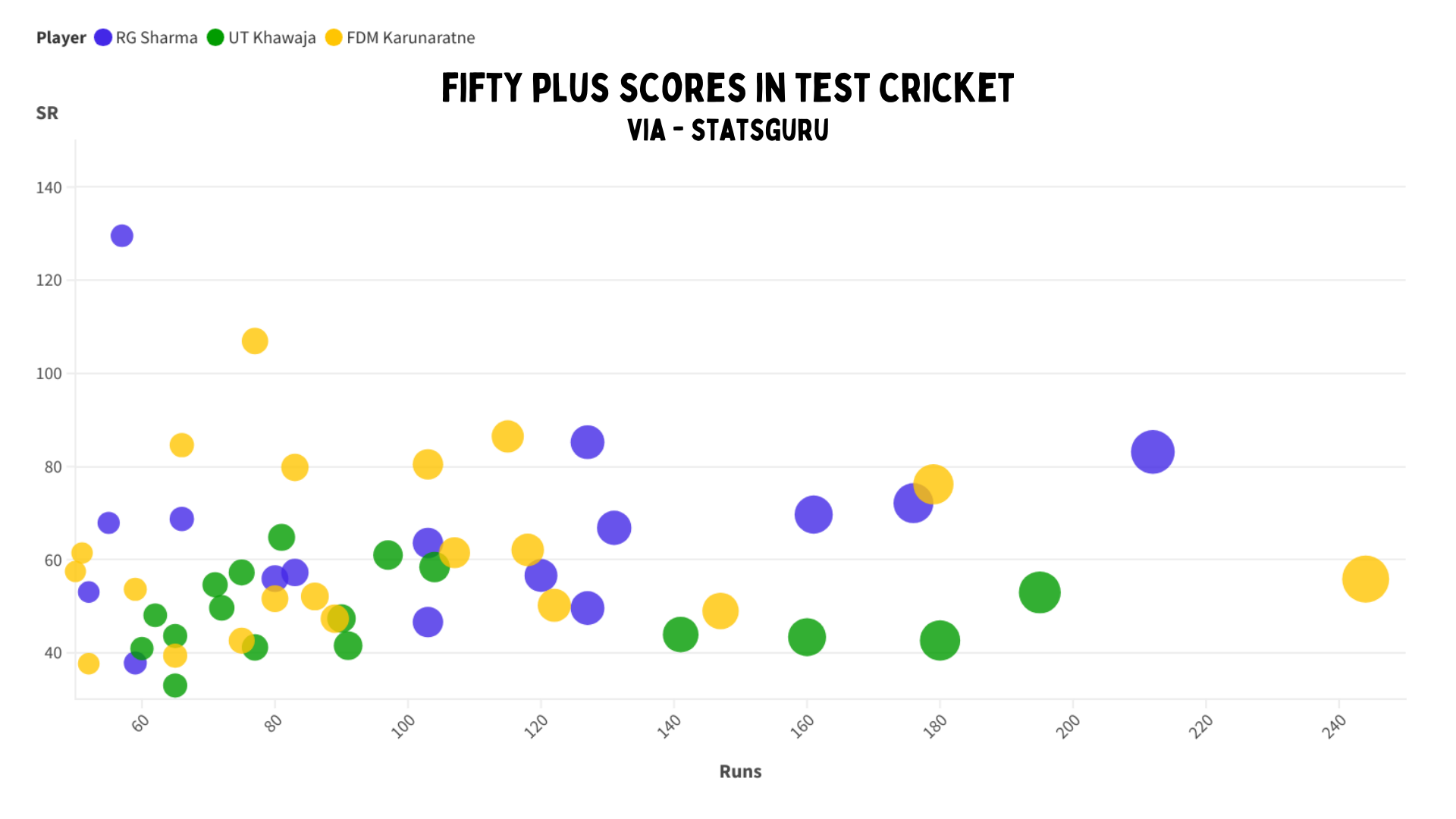
Rohit is comfortably the most talented and versatile of the lot, and has played on tougher surfaces than the other two. But Khawaja has not missed a single Test for Australia, and is equally impressive, if not better, in terms of the overall record. Karunaratne deserves to be praised for making it to this league despite being from a non Big 3 team, missing only two Tests, and also leading the side.
All of these players have been incredible recently. But there is no easy answer for who is best. Rohit has the biggest impact, Karunaratne has the longest run while also being the truest opener and Khawaja has become the best defensive option. Some of this does come down to preference. Rohit has more hundreds than fifties, while Karunaratne does pass fifty the most. But Khawaja faces way more balls than most of them.
You want a match winner, probably Rohit. You want a blocker, Usman is your guy, if you want something closer to the combo, it may be Dimuth. You add in Crawley, Duckett, Conway, Smith and Jaiswal, and one thing is for sure, we have one of the weirdest collections of openers ever in Tests right now.

